












Bonistas del Patio, or Backyard Bondholders, a group that represented Puerto Rico bondholders in bankruptcy negotiations, is opposing a Financial Oversight and Management Board request that would prevent the group’s advisers from receiving $7 million in professional fees.
Bonistas has been seeking payment citing their contributions to helping reach an agreement that led to the Puerto Rico Sales Tax Financing Corp. (COFINA by its Spanish acronym) debt adjustment plan and the commonwealth debt adjustment plan.


Davis Polk is seeking $2 million in legal fees and Ducera Partners $5 million in financial advising fees for their work with Bonistas to help forge an agreement between sales tax and general obligation
bondholders.
The bills from Bonistas’ professionals were not analyzed by the fee examiner as happened with the other professionals working on the island’s bankruptcy. U.S. District Court Judge Laura Taylor Swain, who oversees Puerto Rico’s Title III bankruptcy cases, asked the oversight board to take a stance on Bonistas pay at a Dec. 14 omnibus hearing. The board objected to the payment in a motion last week for the first time.
Bonistas said that regardless of whether the commonwealth by its conduct has previously bound itself to pay the professional expenses of Bonistas, those expenses should be allowed by the court under the Bankruptcy Code on account of the substantial contributions made by Bonistas to the Title III cases, and accordingly the commonwealth should be required to pay such expenses.
The organization said the claims by the oversight board that Bonistas didn’t make a substantial contribution “cannot be explained.”

“It is one thing to say the Bonistas Expenses should be disallowed even if Bonistas made substantial contributions to the cases; it is another to deny that Bonistas made such contributions, flying in the face of the Oversight Board’s own clear and repeated statements to the contrary at the time those contributions were made,” Bonistas argued.


So compelling was Bonistas’ role in helping forge an agreement that “the order confirming the COFINA Plan cited the involvement of Bonistas advocating for the interests of Puerto Rico resident bondholders” as a reason that “all major Classes of Claims were represented in [the] Mediation,” the organization argued. In addition, “the Oversight Board pressed Bonistas to publicly support the COFINA Plan, called upon Bonistas to take actions to encourage local bondholders to support the plan, and asked Bonistas to assist the Oversight Board in locating local bondholders to articulate their support for the plan at the COFINA confirmation hearing,” Bonistas asserted.

In the bankruptcy process in Puerto Rico, professionals hired by the different creditor groups are being paid by the bankruptcy estate after their bills are examined by the fee examiner. Bonistas was a nonprofit group that represented local bondholders, but it is not a creditor itself.

The Federal Emergency Management Agency (FEMA) announced Thursday that it has awarded over $68.5 million to the Puerto Rico Electric Power Authority (PREPA) for emergency protective measures taken after Hurricane Fiona.
Following the impact of Fiona last September, PREPA activated supplemental peaking units, which help to increase energy production across Puerto Rico, thereby reducing blackouts in municipalities affected by the disaster. PREPA’s immediate action led to increased energy production and helped protect residents from the impacts of the storm, the federal agency said in a statement.
“To have a reliable and resilient electrical system is a top priority for Puerto Rico, particularly for our state government as well as federal entities. For that reason, before, during and after hurricane Fiona, we have taken prompt and direct actions to make this happen,” said Gov. Pedro Pierluisi Urrutia, who has met with President Biden, multiple cabinet members and the FEMA administration. “Once again, I thank
In the aftermath of Hurricane Fiona last September, the Puerto Rico Electric Power Authority activated supplemental peaking units to help increase energy production across the island and thereby reduce blackouts in impacted towns.
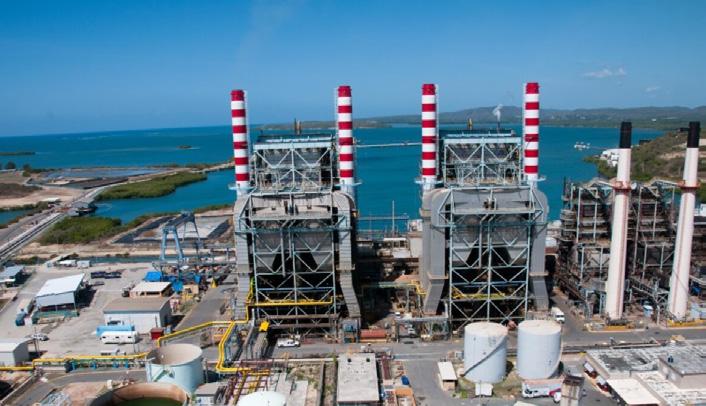
the Biden administration for promptly addressing our needs, and FEMA who, together with COR3 [the Central Office for Recovery, Reconstruction and Resiliency] and PREPA, have
been working toward the same goal: the well being of our citizens and the reconstruction of Puerto Rico.”
Meanwhile, FEMA’s federal coordinating officer, Nancy Casper, said that “when disaster strikes, it is our foremost priority to ensure the government of Puerto Rico has the tools necessary to respond.”
“This includes ensuring there is a dependable power source that will sustain critical, lifesaving and life-sustaining facilities,” she said. “Thanks to the hard work and dedication of our partners at PREPA and COR3, FEMA is able to award this funding swiftly and help ensure Puerto Rico continues to have the resources they need.”
FEMA’s Public Assistance Program provides funding to local government jurisdictions and eligible private nonprofits for the repair, replacement, or restoration of disaster-damaged infrastructure as well as costs incurred for emergency actions taken to protect lives and property. This $68.5 million award will provide additional resources to the local government and adds to the $670.5 million in federal funding that has been obligated to support communities, government and private nonprofit entities as they recover from Hurricane Fiona.
Loíza Mayor Julia Nazario Fuentes announced Thursday that everything is ready for the celebration of Three Kings Day to be held today, Friday, at María de la Cruz Historical Park on highway PR-188 in the town’s Las Cuevas sector.
The event will have a Jurassic Park theme, where children will enjoy a setting related to that prehistoric era, as well as an educational component.
“The idea is to combine recreation and education with family sharing and Puerto Rican tradition,” Nazario Fuentes said.
The family event begins at 1 p.m., with performances by Atención Atención, El Circo de Chicle, Grupo Folklórico Belelé and King Arthur. There will be numerous recreational activities, including a jump house, swings, slides, a midway,
gifts and a variety of food vendors.
The María de la Cruz Cave was declared a historical monument and Puerto Rican national heritage site on Feb. 18, 1972, after the research and archaeological findings of anthropologist Dr. Ricardo Alegría. During excavations carried out in 1948 by Alegría and the staff of the Archaeological Research Center of the University of Puerto Rico, evidence of an archaic culture, the inhabitants of the island before the Tainos, was found.
This site has been the scene of concerts by Richie Ray and mass events such as the Caldo Santo Festival and the Puerto Rico International Folk Festival, as well as events staged by various schools, communities and churches.
Friday’s Three Kings event in Loíza will have a Jurassic Park theme, where children will enjoy a setting related to that prehistoric era, along with an educational component.

Although he has not yet consulted on the recommendation with the Department of Consumer Affairs, Gov. Pedro Pierluisi Urrutia said Thursday that he does not agree with putting people in a position of paying with cash in exchange for “discounts,” as proposed by gasoline retailers and supported by other companies such as restaurants and supermarkets.
“I think generally speaking, each commercial establishment
decides how it interacts with its clientele,” the governor said in response to questions from the press. “I mean, usually the government doesn’t get into that. Unless there are misleading ads and there are unfair practices with consumers. Another thing I’m going to comment on is that more and more, cards are used to pay. This is universal. More and more, cash is used less when paying. From my point of view there is no turning back from that, and it has its advantages because it is also, to some extent, dissuasive from the standpoint of crime, that there are not businesses with so much cash …”
“I’m not sure that the clientele is going to be happy if … what’s being done is in a way encouraging or discouraging in terms of the use of cards,” Pierliuisi added. “Although I know that what we are talking about is some kind of discount, to some extent they are telling the one who is going to use a card, you are no longer going to leave the same as the one who is going to pay in cash. And I think this is going to be seen [as discriminatory] by a lot of people and is going to make them uncomfortable. So, my call to everyone who has a business is to think about it.”
The Puerto Rico Energy Bureau (PREB) announced Thursday that it will hold workshops in February on the potential use of hydrogen as an alternative source of energy.
The First Technical Workshop initially scheduled for Jan. 10 was postponed to Feb. 7 due to technical matters. The Feb. 7 workshop, or hearing, will introduce preliminary hydrogen strategies and will provide background on global hydrogen initiatives and hydrogen basics.
The energy regulator also seeks to obtain feedback from organizations and their perspectives.
The PREB scheduled a second hearing on March 7 to present findings in terms of the technical potential roles for hydrogen. Another hearing slated for April 11 will present recommendations for the hydrogen strategy.
The hearings will be virtual. All people interested in participating in the technical workshops must request access on or before 2 p.m. of the day before each scheduled hearing by sending an email to secretaria@ jrsp.pr.gov, or contacting the PREB clerk at (787) 523-6262.

Gov. Pedro Pierluisi Urrutia signed Executive Order 2022-022 in March 2022 to recognize and adopt hydrogen combustion
An initial workshop/hearing on Feb. 7 will introduce preliminary hydrogen strategies
as a renewable energy source.
“We want to continue expanding energy sources to improve our capabilities to generate electricity with renewable and clean sources for the benefit of the environment, as well as to provide greater stability both in the cost and in the electric power service,” the governor said at the time.
Pierluisi ordered all government agencies to work directly or indirectly on the generation, transmission or distribution of electrical energy, as well as to consider the combustion of hydrogen as a source of renewable energy in the evaluation of projects.
In December, the PREB announced it had hired the market research firm Velerity to
evaluate the potential for developing green hydrogen generation projects on the island.

Under the contract that ends in June, Velerity is required to identify the potential of hydrogen as a renewable energy source and the challenges in developing hydrogen-sourced projects, and to create a roadmap that includes public policies to enable such initiatives.
By THE STAR STAFFThe island Health Department confirmed Thursday that cases of the so-called “Kraken” subvariant of COVID-19 have already been reported in Puerto Rico.
The new omicron subvariant XBB.1.5, known as Kraken and which was first located in New York state, is expanding across the United States and already accounts for about 40% of COVID-19 cases in the nation, up from 20% last week.
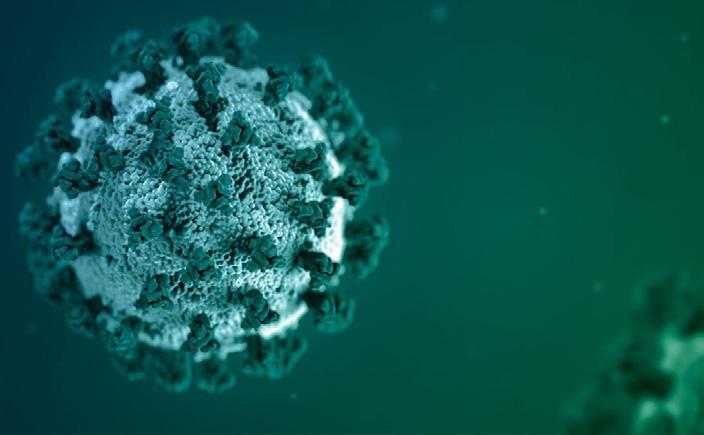
The Health Department confirmed Thursday that the variant had already been reported in one case going back to November.
“In Puerto Rico, we identified sublineage XBB.1.5 on November 7,” an agency official told Red Informativa. “The first case presented symptoms of fever, cough, loss of smell or taste, sore throat, nasal congestion or runny nose and diarrhea, symptoms similar to those reported in case investigations that are conducted as part of the weekly follow-up calls and that are published in the Department of Health portal on Sundays.”
According to the latest data from the Centers for Disease Control and Prevention (CDC), the Kraken subvariant leads the number of national COVID-19 cases and has gained ground especially in the Northeast, where in New York it has already reached 75% of confirmed cases.

Prosecutors charged Francisco Torres Maestre in absentia after several attempts were made in previous days to serve him with a subpoena.
By THE STAR STAFFOfficers assigned to the Puerto Rico Police Bureau arrested on Thursday a man who had been charged the previous day for obstruction of justice in an incident reported in December in Utuado. During that incident, police used a taser to detain a woman who reportedly is the partner of the man arrested Thursday.
According to the police, the man was taken by surprise in the morning hours in front of a grocery store in Utuado’s La Granja neighborhood. He was identified as Francisco Torres Maestre.
Torres Maestre was arrested after prosecutors charged him in absentia after several attempts were made in previous days to serve him with a subpoena.

The 32-year-old man, a resident of Utuado, allegedly appears in the videos of the intervention that officer Eric Matos executed last month at a fast food restaurant in Utuado, during which the taser was used to achieve the arrest of Amanda Santiago López for obstruction of justice.
Officer Osvaldo Torres, under the supervision of Sgt. Harry Rosado, both of the Special Arrests Division, placed Torres Maestre under arrest without resistance on Thursday, according to the police report. In addition, they reported that the man has a criminal record for controlled substances and violation of the weapons law, among other crimes.
At press time, Torres Maestre remained in a cell at the Utuado precinct waiting for processing under the arrest warrant against him, which includes a $10,000 bail.
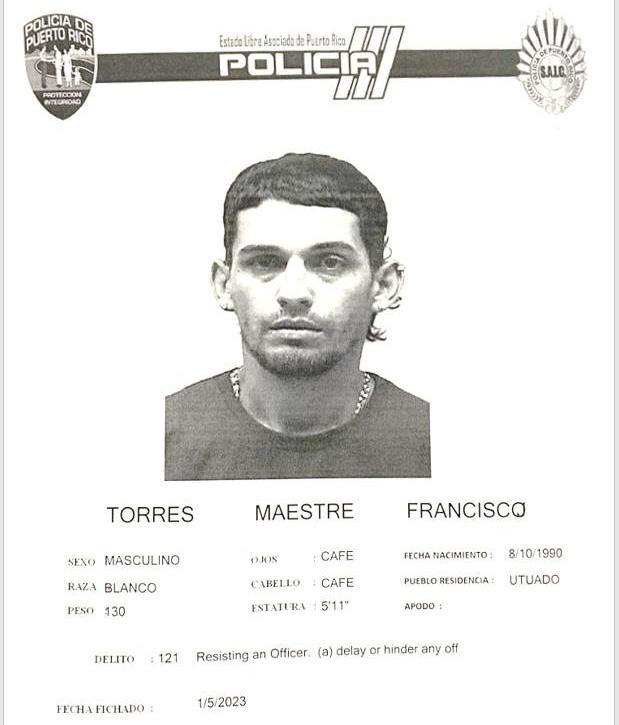
As the chaos and confusion on the House floor continued for a third day, Republicans made it abundantly clear who is leading their party: absolutely no one.
From the halls of Congress to the Ohio Statehouse to the backroom dealings of the Republican National Committee, the party is confronting an identity crisis unseen in decades. With no unified legislative agenda, clear leadership or shared vision for the country, Republicans find themselves mired in intraparty warfare, defined by a fringe element that seems more eager to tear down the House than to rebuild the foundation of a political party that has faced disappointment in the past three national elections.
Even as former President Donald Trump rarely leaves his Florida home in what so far appears to be little more than a Potemkin presidential campaign, Republicans have failed to quell the anti-establishment fervor that accompanied his rise to power. Instead, those tumultuous political forces now threaten to devour the entire party.
Nowhere was that on more vivid display than the House floor, where 21 Republicans on Thursday stymied their party from taking control for a third day by refusing to support Rep. Kevin McCarthy’s bid for speaker.
After McCarthy failed on his seventh attempt to win the leadership position, the House appeared in a state of limbo, with Republicans continuing to negotiate among themselves about whether to keep voting or adjourn for the weekend.

“Nobody is in charge,” John Fredericks, a syndicated right-wing radio host and former chairman of Trump’s 2016 and 2020 campaigns in Virginia, said in an interview. “Embrace the chaos. Our movement is embracing the chaos.”
That ideology of destruction defies characterization by traditional political labels like moderate or conservative. Instead, the party has created its own complicated taxonomy of America First, MAGA and antiTrump — descriptions that are more about political style and personal vendettas than policy disagreements.
This iteration of the Grand Old Party, with its narrow majority in the House em-
powering conservative dissidents, represents a striking reversal of the classic political maxim that Democrats need to fall in love while Republicans just fall in line.
“The members who began this have little interest in legislating, but are most interested in burning down the existing Republican leadership structure,” said Karl Rove, the Republican strategist who embodies the party’s pre-Trump era. “Their behavior shows the absence of power corrupts just as absolutely as power does.”
Fredericks, who is typically one of the most aggressive pro-Trump voices in the conservative news media, said that even the former president’s renewed endorsement of McCarthy on Wednesday would do little to shore up the would-be speaker’s support.
Indeed, none of McCarthy’s opponents reversed course after receiving calls from Trump encouraging them to do so. Rather, Rep. Lauren Boebert of Colorado took to the floor Wednesday afternoon to urge her “favorite president” to change his view and tell McCarthy to withdraw his bid.
“The movement has eclipsed its Trump leadership,” Fredericks said on Wednesday, when 20 House Republicans opposed McCarthy’s bid. “We found 20 new leaders.”
That’s a very different definition of a leader from the traditional image of a le-
gislator muscling policy through Congress and reshaping American life. In the new conservative ecosystem, leaders are born of the outrage that drives news coverage on the right and fuels online fundraising.
The new political dynamics distinguish this class of Republican agitators from the self-styled revolutionaries who took control under former House Speaker Newt Gingrich in 1994 or the Tea Party lawmakers who clashed with Speaker John Boehner after the party’s 2010 triumph. Those insurgent movements aspired to change the vision of the party. This group of House lawmakers, their Republican critics say, are focused far more on their personal power.
“There’s been a growing tolerance of people who do not act in good faith who consistently diminish the institution for their personal gain and advancement,” said former Rep. Carlos Curbelo, R-Fla., who was in the House for the first two years of the Trump administration. “This is the most dramatic manifestation of that toxic culture.”
While few voters are likely to be following every twist in the arcane congressional procedure, several Republicans acknowledged that the party’s infighting in the House could saddle it with an enduring perception of dysfunction.
Matt Brooks, the executive director of
the powerful Republican Jewish Coalition, called for the “infidels” to pay a “real price” for their opposition, adding, “There are elements of us looking like the Keystone Kops.”
At least a few Republicans worried that the drama could have long-term effects, as the party heads into what increasingly looks like a contentious battle for the 2024 presidential nomination.
“We have to get this speakership settled and we have to go forward if we want to be successful in 2024 as a united party,” Ronna McDaniel, who faces a stiff challenge this month to her leadership of the Republican National Committee, said on Fox News on Tuesday. Pleading for lawmakers to unify behind McCarthy, she said, “This Republicanon-Republican infighting is only hurting one thing: our party.”
The Republican unrest has trickled down to places like the Ohio Statehouse, where state Rep. Jason Stephens, a moderate Republican, joined with Democrats this week to snatch the speakership from state Rep. Derek Merrin, who has co-sponsored some of the chamber’s most conservative legislation. The surprising outcome reflected the Republican caucus’s inability to unify behind a single candidate despite holding a two-thirds majority.
The Republican National Committee is also facing questions over McDaniel’s leadership. Like McCarthy, she predicted sweeping victories before the November election, and she is now being challenged by Harmeet Dhillon of California, an RNC member who has argued that there must be consequences for the party’s failure to meet expectations.
Both Republican conflicts have split the conservative news media, with Tucker Carlson of Fox News backing the insurgencies while his prime-time colleagues have urged Republicans to coalesce behind McCarthy.
As in the House, the RNC fight isn’t about conservative bona fides or fundraising prowess or even fealty to Trump. Dhillon’s case against McDaniel is that the party didn’t perform strongly enough in November — and that if more Republicans had won in competitive House races, McCarthy would not be beholden to the members who have held hostage his bid to be speaker.
without electricity, according to the tracking site poweroutage.us. Flash flood watches and winter storm warnings covered large swaths of the state, and about 600,000 residents were under high wind warnings.
In San Francisco, crews were working to remove trees and clean streets littered with debris from the heavy winds. Near the city’s main public library, a family was rescued after a tree fell onto their car Wednesday night. “Falling trees continue to be a concern,” the library warned on Twitter after the incident.
rounds of heavy precipitation are expected to hit California on Saturday and again Monday.
Scientists are not sure how climate change affects the likelihood that atmospheric rivers will crash into California’s coast in rapid-fire succession again. Scientists are studying whether global warming might be shifting the way winds carry moisture around the atmosphere.
By SHAWN HUBLER, SOUMYA KARLAMANGA and MIKE IVESApowerful winter storm system that toppled trees and knocked out electricity was moving across California on Thursday, bringing more rain, wind and snow to the already battered state.
The storm, one of several that is expected to pound the West Coast this month, was particularly disruptive in the Bay Area, where a combination of high winds and saturated ground conditions downed trees, which damaged power

lines and disrupted travel.

Bay Area Rapid Transit, which ferries thousands of commuters to work each day, warned of systemwide delays because of fallen trees and continuing wet weather conditions.
In Burlingame, near San Francisco International Airport, a tree fell onto power lines near a set of train tracks, shutting down rail service Thursday morning. And a mudslide was blocking one lane of Highway 1, according to the police in Pacifica, south of San Francisco.
As of Thursday morning, about 170,000 customers in California were

Authorities blamed at least two deaths Wednesday on the storm. In Fairfield, California, northeast of San Francisco, a 19-year-old woman died after the car she was driving hydroplaned and crashed into a utility pole, police said. And a 2-year-old was killed when a redwood tree fell on a mobile home in Occidental, a rural community in Sonoma County, said Josh Cerda, a firefighter engineer with the local volunteer fire department.
Up to 3 inches of rain fell overnight around Northern California and about 1 1/2 inches in Sacramento, Johnnie Powell, a meteorologist with the National Weather Service in Sacramento, said Thursday morning. Winds peaked at around 60 mph in Redding and at about 50 mph in the Sacramento region, he said.
Parts of Southern California’s coast could see heavy rains later Thursday. That moisture raised the prospect of rapid runoff along the state’s coast and interior valleys, as well as in the Sierra Nevada foothills and in areas around burn scars left by wildfires, a weather service advisory said.
As a result, several school districts around the Bay Area canceled classes Thursday. More than a dozen school districts in flood-prone San Mateo County, just south of San Francisco, announced they would be closed Thursday, as did nine in Sonoma County.
Some parks across Northern California were also either partially or fully closed for the day.
The storm is part of a series of atmospheric rivers — channels of moisture from the tropical Pacific Ocean. Further
When such storms are particularly severe or sweep through in rapid succession, they can deliver too much water too quickly to a state that has lately been parched by drought and scorched by wildfires.
“This is an extreme weather event, and we’re moving from extreme drought to extreme flood,” Karla Nemeth, the director of California’s Department of Water Resources, told reporters Wednesday. “What that means is, a lot of our trees are stressed. After three years of intensive drought, the ground is saturated, and there is significant chance of downed trees that will create significant problems.”
California has taken a pounding this month, even as the heavy rain and snow have brought a measure of relief to the state’s giant agricultural industry. An atmospheric river that drenched the West Coast last week killed at least five people in Oregon. A related storm hit earlier this week, causing widespread flooding in the Bay Area and at least four deaths in California.
In Elk Grove, south of Sacramento, the Wilton Rancheria tribe said Tuesday that flooding had damaged sacred burial grounds along the Cosumnes River in Wilton, imperiling “hundreds of unmarked Wilton Rancheria ancestral burial sites.”
With more bad weather on the way, Gov. Gavin Newsom declared a state of emergency Wednesday, saying he expected more highway closures, infrastructure failures and mandatory evacuations in the coming days.
Several communities across California issued evacuation orders, including in an area of San Benito County, south of San Jose, where a failure at a hydropower dam was expected to produce flooding.
The man accused of killing four University of Idaho college students received a new license plate for his car five days after the murders, according to records released earlier this week.
The licensing documents in Washington state show that the vehicle driven by the suspect, Bryan Kohberger, was a white Hyundai Elantra, the type of vehicle that investigators had been seeking in recent weeks.
Police in Moscow, Idaho, had said that a white Hyundai Elantra from between 2011 and 2013 had been seen near the scene of the crimes on the night of the killings, Nov. 13. Kohberger’s car, a 2015 model, was registered Nov. 18, according to the licensing document. A vehicle history report shows the car had previously been registered in Pennsylvania, where Kohberger is from.
Kohberger, 28, had moved to Pullman, Washington, in recent months and began studying criminology in a doctoral program at Washington State University in August. He has said through a lawyer that he expects to be exonerated in the case. Kohberger’s new lawyer did not immediately respond to a request for comment on the license plate records.
On Wednesday, police in Indiana released new body camera footage showing that, two weeks before Kohberger was arrested, police there had pulled him over twice in a 10-minute stretch for tailgating. The traffic stops, on Dec. 15, came as Kohberger was driving across the country with his father for winter break in the same car for which he had obtained the new license plate.
During both stops, the suspect’s father mentioned a fatal police standoff that took place that morning near Washington State University, where his son was a student, and told the officer that he and his son had been discussing the “horrifying” incident.
The police shooting they were discussing does not appear to have any connection to the four fatal stabbings that occurred about a month earlier in Idaho, just across the border from the WSU campus. Kohberger is charged with four counts of murder in the stabbings.
Kohberger was the driver of the car during both stops, and the new footage is the most that the public has seen of him since he became the subject of intense scrutiny after his arrest. On Wednesday, Kohberger was flown by police from Pennsylvania, where he was visiting his parents after the road trip, to Idaho.

The Pennsylvania State Police plane touched down at the Pullman-Moscow Regional Airport in Washington state shortly before 6:30 p.m., and Kohberger was booked into the Latah County Jail in Moscow.
Kohberger’s father, Michael Kohberger, visited him in December and they drove across the country from the WSU campus in Pullman to their home in eastern Pennsylvania. During that trip, they were pulled over twice Dec. 15 for tailgating; in both traffic stops, the officers let the men off with a warning.
There is no indication that police in Indiana had any idea that Bryan Kohberger would be arrested for the murders, or that they were aware of police in Moscow saying that a white Hyundai Elantra had been seen near the crime scene on the night of the murders.
During the first stop, about 10:42 a.m., a deputy with the Hancock County Sheriff’s Department pulled Kohberger and his father over along Interstate 70, just east of Indianapolis. The body camera footage released Wednesday captured the deputy asking where the two were headed. In response, Kohberger’s father tells him that they were coming from Washington and begins talking about the police standoff that was unfolding near the WSU campus that day.
Kohberger’s father tells the officer that there had been a “mass shooting.” He is corrected by his son, who says, “We don’t know if it was a mass shooting,” and refers to a SWAT team being called for the standoff. “It’s horrifying,” Kohberger’s father says in the video. That incident involved a man who police later said had barricaded himself in an apartment and threatened to kill his roommates before a police officer shot him to death.
At another point in the video, the father says, “We’re slightly punchy because we’ve been driving for hours.”
After about three minutes, the deputy says, “Do me a favor and don’t follow too close, OK?” and then returns Kohberger’s driver’s license and lets them go.
Just five minutes later, Kohberger and his father were pulled over again, this time by an Indiana state trooper who also said that they were tailgating. The audio from the trooper’s body camera is obscured by traffic noise, but Kohberger and his father could be heard telling the officer that they were just stopped minutes earlier. Again, the father brought up the incident that morning at WSU. The trooper wished them a safe trip and let them go with a warning.
Two weeks later, on Dec. 30, police in Pennsylvania carried out a pre-dawn raid of Kohberger’s parents’ home, arresting Kohberger on suspicion of carrying out the Idaho killings. They also searched his car and executed a warrant to obtain his DNA, officials said.
Kohberger had just completed his first semester at WSU, which is about a 15-minute drive from the crime scene. Classmates said he had shown an interest in the psychology of criminals as well as in forensics.
The murders of the four students — Madison Mogen, 21; Kaylee Goncalves, 21; Xana Kernodle, 20; and Ethan Chapin, 20 — and the arrest of Kohberger have rattled the neighboring college towns of Moscow and Pullman.
The stabbings took place in the early morning hours at a home along a dead-end street a five-minute walk from the University of Idaho campus. Police have said that the victims were most likely asleep when they were attacked. Two other roommates were in the home but apparently slept through the killings.
Friends and relatives of the victims are searching for any connection between the victims and Kohberger, but so far none has been disclosed.
Police have said that the surviving roommates realized something was wrong only late in the morning and believed that only one of their roommates had passed out. They called friends to the home and then someone called 911, after which police officers discovered the grisly scene.
When California, New York, Texas and other states began deregulating their electricity markets in the 1990s, officials promised that those changes would foster competition and make energy more affordable.
But it hasn’t worked out that way.
Average retail electricity costs in the 35 states that have partly or entirely broken apart the generation, transmission and retail distribution of energy into separate businesses have risen faster than rates in the 15 states that have not deregulated, including Florida and Oregon. That difference has persisted for much of the past two decades or so, including in the past year, when energy prices increased worldwide after Russia invaded Ukraine.
On average, residents living in a deregulated market pay $40 more per month for electricity than those in the states that let individual utilities control most or all parts of the grid. Deregulated areas have had higher prices as far back as 1998.
“After the numbers are that far apart for this long you have to wonder if something isn’t working very well,” said Robert McCullough, an energy researcher and consultant who analyzed electricity rate data at the request of The New York Times. “If your car hasn’t been working for 20 years, maybe you should take it to the dealership.”
One big reason deregulated areas have higher rates is that utilities there are spending more on power lines to carry electricity over hundreds of miles. That spending, which is ultimately paid for by individuals and businesses, often gets minimal review by state and federal regulators. By comparison, officials in areas that have not deregulated their energy maintain much greater control over utility spending and rates.
In addition, wholesale power prices tend to be higher in deregulated markets because the profits taken in by energy suppliers — companies that are separate from the utilities that deliver electricity to homes — more than offset any savings to consumers from greater competition and efficiency. In regulated markets, single utilities manage all or most parts of the grid, including producing energy and delivering it to homes and businesses.
The deregulation of electricity markets is the subject of intense debate among academics, analysts, regulators and utility industry executives. To critics such as McCullough, the gap between electric rates is a powerful argument against deregulation.
But many energy executives and scho-
lars, including William W. Hogan, a professor of global energy policy at Harvard’s Kennedy School, contend that allowing more businesses to generate electricity and trade it in wholesale markets makes the system more efficient. Some officials, including in the Biden administration, have argued that regional approaches to electricity are essential to fighting climate change by making it easier for lots of companies to build wind and solar farms and connect them to the grid. Relying on just a few large utilities to do that would make the effort much longer, deregulation proponents argue.
For much of the last century, utilities controlled the production, transmission and distribution of power. Governments granted these companies monopolies and regulated them.
But advocates for deregulation argued that the arrangement gave utilities excessive influence over legislatures and regulators.
In the 1990s, Hogan became a leading voice for change. His ideas first got traction in California.
In 1996, the California Legislature and Gov. Pete Wilson deregulated the energy market. The state’s three large utilities — Pacific Gas & Electric, Southern California Edison and San Diego Gas & Electric — would still deliver electricity, but they would buy much of that energy from independent power producers and traders on a wholesale market.
“We wanted to have an electricity wholesale market,” Hogan said. “Anybody who wanted to participate could participate.”
But California’s deregulation quickly tur-
ned into a disaster, with surging prices and crippling blackouts. Widely attributed to traders at Enron and other companies, the crisis revealed that the state had not put adequate safeguards in place.
California stabilized its system in the early 2000s, but analysts say the state, with its high electricity rates and recent power outages, still serves as a cautionary tale.

Esperanza Vielma, a resident of Stockton, California, typically pays Pacific Gas & Electric $300 a month to power her 1,100-square-foot house, she said. During a heat wave last summer, one bill reached almost $600.
“We have to alter, spending-wise, what we’re able to do and not do,” she said.
PG&E has rate tiers that start at 32 cents a kilowatt-hour, or $320 for 1,000 kilowatt-hours, and rise to 49 cents. The utility’s lowest rate is twice the national average.
PG&E’s rates are high mostly because of spending on power lines. Since 2006, the portion of customers’ bills used to pay for transmission has increased 411%, according to the Utility Reform Network, a consumer advocacy group.
Some of that spending has been driven by California’s severe drought, which was made worse by climate change. PG&E’s equipment ignited wildfires after coming into contact with dry trees and brush, and the company is spending billions of dollars to improve safety.
PG&E acknowledged the growing hardship that electricity rates posed and said it was trying to reduce the impact. The company said it was seeking more federal aid, selling its San
Francisco office and allowing wireless companies to attach equipment to utility poles.
“We are committed to delivering safe and reliable and clean energy, and reducing wildfire risk,” said Lynsey Paulo, a PG&E spokesperson, noting that rates are approved by state and federal regulators. “We know we have a responsibility to manage rising costs for our customers.”
In a statement, the California Independent System Operator, which manages the electric grid for about 80% of ratepayers in the state and an electricity market that covers many Western states, said expanding the wholesale electricity market and cooperating with other states had helped residents save money.
Scott Harvey, a consultant to the state’s system operator and other regional grid managers, agreed with that assessment but acknowledged that retail rates were too high and climbing too fast.
“I think it is foreshadowing to some degree,” Harvey said of California’s electricity prices. Consumer costs could spike in the short term as utilities upgrade equipment, he added. “I’m worried about that. We’re locking ourselves into a lot of choices.”
Competition ought to have driven down the price of energy, but it has effectively left consumers paying more for power that should have been relatively cheap, said Tyson Slocum, who directs the energy program at Public Citizen, a research and advocacy group founded by Ralph Nader. “These markets are actually not very efficient. They’re not always the leastcost option.”
Two economics professors reached a similar conclusion in a December working paper about electricity markets. “We find that the higher markups charged by generation companies more than offset the efficiency gains, leading to higher wholesale prices,” wrote the researchers, Alexander MacKay of Harvard and Ignacia Mercadal of the University of Florida.
One former state energy regulator, Brien Sheahan, who was chair of the Illinois Commerce Commission, said energy costs could continue rising rapidly in the coming years, partly because utilities will spend hundreds of billions of dollars on the grid to address climate change and contend with more devastating weather extremes. While that spending could eventually lead to savings and a more reliable grid, it will probably drive up rates in the short term.
Sheahan said costs were likely to rise more in deregulated states, such as Illinois, because there will be fewer checks and balances on how utilities spend money than in regulated states. “It’s just going to get worse and worse and worse,” he said.
The rally in global stocks paused on Thursday, led by declines on Wall Street, as upbeat jobs data after a firm message from the Fed that it won’t be cutting interest rates any time soon offset China’s latest reopening plans.
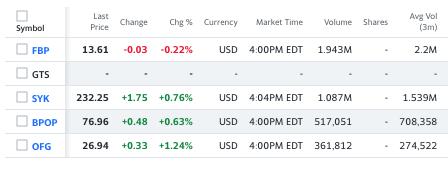
News that China’s mainland border with Hong Kong will be reopened after three years had sent Asian-Pacific shares outside Japan (.MIAPJ0000PUS) to a four-month high overnight, but with both the dollar and bond market borrowing costs creeping up, Europe couldn’t keep up.

The MSCI All-World index (.MIWD00000PUS) shed 0.55%. On Wall Street, the S&P 500 (.SPX) and the Dow Jones Industrial Average (.DJI) lost 0.8%, and the Nasdaq Composite (.IXIC) dropped 0.9%.


The pan-European STOXX (.STOXX) index was flat after gaining more than 3% in its first three sessions of 2023. London’s FTSE 100 (.FTSE) managed a respectable 0.7% rise as better-than-expected numbers from retail giant Next (NXT.L) lifted the entire European sector , but it barely made up for a groggy Frankfurt (.GDAXI) and Paris (.FCHI).
“Everyone expected a hawkish message from the Fed and that is what we got,” said MUFG’s Head of Research for Global Markets EMEA, Derek Halpenny.
“Really it’s now about payrolls (U.S. jobs data) tomorrow,” he added, explaining that the labour market would be a big factor in how high inflation remained this year.
“A strong print tomorrow and I think you are going to get a fairly rapid repricing for a 50 bps hike at the next (Fed) meeting.”

Investors were already digesting their pre-payrolls appetiser, the ADP National Employment report, which showed the private sector added more jobs in December than a month ago. It came a day after a moderate fall in U.S. job openings too.
China, meanwhile, has abruptly dropped ultra-strict curbs on travel and activity, fanning hopes that once the infection waves pass its giant economic motors can start firing again and offset the slowdowns in other parts of the world.
Thursday’s biggest Asian gains included E-commerce and consumer stocks in Hong Kong thanks to the China mainland border news, which drove the Hang Seng (.HSI) to a six-month high.
The yuan also rose about 0.12% to 6.8681, a four-anda-half-month high, and also supported other currencies such as the Thai baht which, as Thailand is now expected to see a mass return of Chinese holidaymakers, has surged nearly 14% in less than three months.
“China reopening has a big impact ... worldwide,” said Joanne Goh, an investment strategist at DBS Bank in Singapore, since it not only spurs tourism and consumption but can ease some of the supply-chain crunches seen during 2022.
“There will be hiccups on the way,” Goh said, during an outlook presentation to reporters. “We give it six months adjusting to the process. But we don’t think it’s reversible.”
China’s central bank also said overnight it would step up financing support to spur domestic consumption and
It has eased an unofficial ban on Australian coal imports in recent days as well and the Australian dollar made a three-week high overnight just below $0.69. It last bought $0.67550.
 By ANATOLY KURMANAEV, CASSANDRA VINOGRAD and ALINA LOBZINA
By ANATOLY KURMANAEV, CASSANDRA VINOGRAD and ALINA LOBZINA
President Vladimir Putin of Russia has ordered his military to implement a 36-hour cease-fire along the front line in Ukraine for the Russian Orthodox Christmas, the Kremlin said Thursday.
A senior Ukrainian official quickly dismissed the move as a “banal trick” and a “propaganda gesture.” Ukraine previously has accused Russia of violating a humanitarian cease-fire earlier in the war and has expressed skepticism over Moscow’s past pledges to exercise military restraint.
Putin called for a unilateral cease-fire, which would be the broadest of its kind since Russia’s invasion of Ukraine nearly a year ago, that would last from midday Friday until midnight Saturday, the Kremlin said. The Russian Ministry of Defense confirmed it had received the order to implement the cease-fire.
“Given that a large number of citizens practicing Orthodoxy resides in the areas of hostilities, we call on the Ukrainian side to announce a cease-fire and give them an opportunity to attend services on Christmas Eve and the day of Christ’s birth,” the Kremlin statement said.
Analysts characterized Putin’s order as
a public relations ploy that he would seek to exploit regardless of Ukraine’s response. If Ukraine agrees to a cease-fire, it would give the Russian military an opportunity to regroup its battered units. If Ukraine ignores the cease-fire, Russia can claim higher moral ground and use ongoing hostilities to further vilify Ukraine in the eyes of the Russian public.
A senior Ukrainian presidential adviser, Mykhailo Podolyak, wrote on Twitter that Moscow’s troops “must leave the occupied territories — only then will it have a ‘temporary truce,’” adding, “Keep hypocrisy to yourself.” In a separate statement, he
called the cease-fire order a “propaganda gesture” and a “banal trick.”
“There is not the slightest desire to end the war,” he said.
In Washington, President Joe Biden said it appeared to him that Putin was “trying to find some oxygen” with the ceasefire announcement. “I am reluctant to respond anything Putin says,” Biden said. “I found it interesting, he was ready to bomb hospitals and nurseries and churches on the 25th and New Year’s.”
Some pro-war Russian nationalists also dismissed the proposal, underlining the depth of mutual animosity.
“We — Russian soldiers and volunteers — don’t want any compromises,” an influential military blogger, Vladlen Tatarsky, wrote on the Telegram messaging app after Putin’s announcement. “We want to kill every person dressed in the uniform of the enemy’s army.”
Russia’s announcement came hours after the head of the Russian Orthodox Church, Patriarch Kirill I, who is a close ally of Putin, called for a cease-fire to allow Orthodox Christians on both sides of the front line to attend church services. Russia celebrates Orthodox holidays based on the Julian calendar, as do some Ukrainians, which is different from the Gregorian
calendar used by majority-Catholic and Protestant nations.
President Recep Tayyip Erdogan of Turkey, who has positioned himself as a mediator in the conflict, spoke to Putin on Thursday and also called for a cease-fire in Ukraine.
Some Ukrainians, especially in the western part of the country, observe Christmas on Dec. 25, and on Christmas Eve, Russian shelling killed at least 10 people in the recently recaptured Ukrainian city of Kherson.
Ukrainian officials have already accused Russia of marring the run-up to Orthodox Christmas with continued attacks on civilians. A Russian strike Thursday in the Kherson region killed a family of three, including a 12-year-old boy, that was preparing to celebrate Christmas together at home, officials said.
“They talk about the ‘Christmas truce’ in the morning, and they kill a whole family by lunchtime,” Kyrylo Tymoshenko, the deputy head of the Ukrainian president’s office, wrote on Telegram.
Pro-Russian officials said Ukraine has also hit civilian targets in occupied towns this week, including a hospital in the town of Tokmok in the Zaporizhzhia region, which left six people dead.
Benedict XVI, the eminent theologian who led the world’s 1.3 billion Catholics as a soft-spoken, if
often besieged, traditionalist, and then became the first pope to resign in nearly six centuries, was buried Thursday after a funeral on the steps of St. Peter’s Basilica presided over by Pope Francis.
Francis, the first pontiff to preside over the funeral Mass for a pope who resigned, offered “our final farewell to Pope Emeritus Benedict” and commended him to “God, our merciful and loving Father.”
The service marked the end of an unusual arrangement. For years, two popes — one emeritus, one in power; one liberal, one conservative — coexisted on the Vatican grounds.
By personally presiding over the funeral, Francis honored his predecessor, who died Saturday at 95, but struck a delicate political balance. Benedict’s funeral was downgraded from a full-on papal affair, upsetting some of his supporters, who have often sought to undercut Francis.
Here is what to know:
— In his homily, Francis did not mention Benedict by name until the last line, in which he referred to him as a
“faithful friend” of Jesus.
— The funeral marks an unambiguous end to Benedict’s role as the leader of the church’s conservative wing, which looked to his vast theological writings, his quarter-century of leadership as the church’s chief doctrinal watchdog and his rules-based papacy as a model.
— Benedict has been buried in the grottoes under St. Peter’s Basilica in the tomb last occupied by Pope John Paul II. Benedict served under him for nearly 30 years and sought to correct his errors in responding to the clerical sexual abuse of minors.
— John Paul, whose funeral was one of the largest in history, was fasttracked to sainthood — critics say in error — and his body now rests upstairs in a chapel. Benedict, far less adored by the public, will have a longer road to beatification.
Seated in the domed, red sandstone government building unveiled by the British Raj less than two decades before India threw off imperial rule, S. Jaishankar, the Indian foreign minister, needs no reminder of how the tides of history sweep away antiquated systems to usher in the new.
Such, he believes, is today’s transformative moment. A “world order which is still very, very deeply Western,” as he put it in an interview, is being hurried out of existence by the impact of the war in Ukraine, to be replaced by a world of “multialignment” where countries will choose their own “particular policies and preferences and interests.”
Certainly, that is what India has done since the war in Ukraine began Feb. 24. It has rejected American and European pressure at the United Nations to condemn the Russian invasion, turned Moscow into its largest oil supplier and dismissed the perceived hypocrisy of the West. Far from apologetic, its tone has been unabashed and its self-interest broadly naked.
With its almost 1.4 billion inhabitants, soon to overtake China as the world’s most populous country, India has a need for cheap Russian oil to sustain its 7% annual growth and lift millions out of poverty. That need is nonnegotiable. India gobbles up all the Russian oil it requires, even some extra for export.
Here comes Prime Minister Narendra Modi’s India, pursuing its own interests with a new assertiveness, throwing off any sense of inferiority and rejecting unalloyed alignment with the West. But which India will strut the 21stcentury global stage, and how will its influence be felt?
The country is at a crossroads, poised between the vibrant plurality of its democracy since independence in 1947 and a turn toward illiberalism under Modi. His “Hindu Renaissance” has threatened some of the core pillars of India’s democracy: equal treatment of all citizens, the right to dissent, the independence of courts and the media.
Democracy and debate are still vigorous — Modi’s Hindu nationalist Bharatiya Janata Party lost a municipal election in Delhi this month — and the prime minister’s popularity strong. For many, India is just too vast and various ever to succumb to some unitary nationalist diktat.
The postwar order had no place for India at the top table. But now, at a moment when Russia’s military aggression under President Vladimir Putin has provided a vivid illustration
of how a world of strongmen and imperial rivalry would look, India may have the power to tilt the balance toward an order dominated by democratic pluralism or by repressive leaders.
Which way Modi’s form of nationalism will lean remains to be seen. It has given many Indians a new pride and bolstered the country’s international stature, even as it has weakened the country’s pluralist and secularist model.
There are no Muslims in Modi’s Cabinet. Hindu mob attacks on Muslims have been met with silence by the prime minister.
“Hatred has penetrated into society at a level that is absolutely terrifying,” acclaimed Indian novelist Arundhati Roy said.
That may be, but for now, Modi’s India seems to brim with confidence.
The Ukraine war, compounding the effects of the COVID-19 pandemic, has fueled the country’s ascent. Together they have pushed corporations to make global supply chains less risky by diversifying toward an open India and away from China’s surveillance state. They have accentuated global economic turbulence from which India is relatively insulated by its huge domestic market.
Those factors have contributed to buoyant projections that India, now No. 5, will be the world’s third-largest economy by 2030, behind only the United States and China.
Communion and division Modi, 72, who adopted Varanasi, Hinduism’s holiest city, as his political constituency in 2014 when he embarked on his campaign to lead India, saying he had been “called by the mother Ganges” — the river of life — has cut a pinkish sandstone gash through it.
Known as “the corridor” and opened a year ago, the project connects the Kashi Vishwanath Temple, dedicated to the Hindu god Shiva, to the riverfront a quarter-mile away.
The broad and almost eerily spotless pedestrian expanse, with its museum and other tourist facilities, links the city’s most revered temple to the river where Hindus wash away their sins. It is quintessential Modi.
Cut through a labyrinth of more than 300 homes that were destroyed to make way for it, the passage intertwines the prime minister’s political life with the deepest of Hindu traditions. At the same time, it proclaims his readiness to fast-forward India through bold initiatives that break with chaos and decay. Modi, a Hindu nationalist and tech enthusiast, is a disrupter.
A self-made man from a humble background in the western state of Gujarat — and from a low status in India’s caste system, or social hierarchy — Modi has come to embody an aspirational India.
Vishwambhar Nath Mishra, a Hindu re-
ligious leader in Varanasi and an engineering professor, said that the corridor had been a “blunder” that had destroyed 142 old shrines, an example of the bulldozing style Modi favors.
“We have always been a unique family in Varanasi, Muslims and Christians and Hindus who sit down and work things out, but Modi chooses to create tensions to get elected,” Mishra said. “If he is trying to establish a Hindu nation, that is very dangerous.”

It is not easy to get into the complex, at the top of Modi’s new corridor, where the 17th-century white-domed Gyanvapi Mosque abuts the Kashi Vishwanath Temple. Intense security checks take a long time to negotiate because this is an epicenter of the inflamed Hindu-Muslim tension in India.
Armed guards are everywhere. They stand beside the mosque, which is encased behind a 20-foot metal fence topped with coils of razor wire.
A flurry of legal cases now centers on the mosque. A court survey this year claimed to have uncovered an ancient lingam on the premises of the mosque — so establishing, at least for hard-line Hindus, that they should be allowed to pray there. Large Muslim prayer gatherings have been banned.
In the ascendant Hindu narrative that Modi has done nothing to discourage, India belongs in the first place to its Hindu majority. The Muslim interlopers of the Mughal Empire and other periods of conquest take second place. Mosque must yield to temple if it can be demonstrated that a temple predated it.
If Putin has chosen to portray Ukraine as a birthplace of the Russian world inseparable from the motherland and embraced the Orthodox Church as a bastion of his power, Modi has chosen Varanasi as a core vehicle of his assertion of India as essentially a Hindu nation. Of course, the Indian leader did so in the interest of power consolidation, not conquest.
Three decades ago, the razing by a Hindu mob of a 16th-century mosque in the northern Indian city of Ayodhya, which Hindus believe is the birthplace of the god Ram, led to the death of 2,000 people and propelled the rise of Modi’s party.
A temple is now being built there. Modi, who presided over the groundbreaking in 2020, has called it “the modern symbol of our traditions.”
Faced by such moves, Roy, the novelist, voiced a common concern. “You know, the
Varanasi sari, worn by Hindus, woven by Muslims, was a symbol of everything that was so interwoven and is now being ripped apart,” she said. “A threat of violence hangs over the city.”
India believes that the interconnectedness of today’s world outweighs the pull of fragmentation and makes a nonsense of talk of a renewed Cold War. If a period of disorder seems inevitable as Western power declines, it will most likely be tempered by economic interdependence, the Indian argument goes.
With inequality worsening, food security worsening, energy security worsening and climate change accelerating, more countries are asking what answers the post-1945 Western-dominated order can provide. India, it seems, believes it can be a broker, bridging East-West and North-South divisions.
“I would argue that generally in the history of India, India has had a much more peaceful, productive relationship with the world than, for example, Europe has had,” Jaishankar said. “Europe has been very expansionist, which is why we had the period of imperialism and colonialism. But in India, despite being subjected to colonialism for two centuries, there’s no animus against the world, no anger. It is a very open society.”
It is also situated between two hostile powers: Pakistan and China.
In December, there was another skirmish at the 2,100mile disputed Chinese-Indian border. Nobody was killed, unlike in 2020, when at least 20 Indian and four Chinese soldiers died. But tensions remain high. “The relationship is very fraught,” Jaishankar said.
Escalation at the border is possible at any moment, but it appears unlikely that India can count on Russia, given Moscow’s growing economic and military dependence on China. That makes India’s strategic relationship with the West critical.
In light of the war in Ukraine, however, each party is adjusting to the fact that the other will pick and choose its principles.
India is in a delicate position. In the face of American criticism, the country chose to take part this year in Russian military exercises that included units from China. At the same time, India is part of a four-nation coalition known as the Quad that includes the United States, Japan and Australia and works for a “free and open Indo-Pacific.”
This is Indian multialignment at work. The Ukraine war has only reinforced New Delhi’s commitment to this course. Washington has worked hard over many years to make India Asia’s democratic counterbalance to President Xi Jinping’s authorita-
rian China. But the world, as seen from India, is too complex for such binary options.
If the Biden administration has been unhappy with India’s business-as-usual approach to Putin since Russia’s invasion of Ukraine, it has also been accepting of it; American realpolitik, as China rises, demands that Modi not be alienated.
Carrying a gas canister in the Old City of Delhi. India gobbles up all the Russian oil it requires, and even some extra for export.

Iran released a well-known actress earlier this week, state media reported, after she spent 2 1/2 weeks in detention for condemning the government’s harsh response to the mass protests that have upended the country since September.

The actress, Taraneh Alidoosti, 38, was arrested Dec. 18 after urging Iranians to support the anti-government protests, becoming one of the most high-profile targets in Iran’s campaign against sports stars, rappers, filmmakers, actors and other celebrities who have expressed solidarity with the demonstrators.
On Wednesday, Iran’s semiofficial ISNA news agency said Alidoosti, star of the Academy Award-winning 2016 film “The Salesman,” directed by Asghar Farhadi, was released on bail, citing her lawyer, Zahra Minouie.
Photos later circulated on social media that appeared to show Alidoosti standing outside Evin Prison, the infamous facility in Tehran where Iran routinely locks up political opponents, academics, writers and other prominent dissidents. Her hair was loosely covered with a scarf, and she held a bunch of flowers.
The protests first swept across Iran in mid-September after the death in custody of 22-year-old Mahsa Amini, who had been arrested by Iran’s morality police,
accused of violating the law mandating headscarves and modest dress for women.
Although the protests at first focused on dismantling the hijab law, they quickly broadened to demand an end to Iran’s entire ruling establishment.
As authorities cracked down with bullets and beatings, resulting in hundreds of deaths and thousands of arrests, Alidoosti became one of the most famous voices cheering on the protests and denouncing
the brutal response.
“Your silence means supporting oppression and oppressors,” Alidoosti wrote on her social media accounts in December after authorities announced the execution by hanging of Mohsen Shekari, 23, one of two protesters Iran has executed so far.
In reporting her arrest, state news agencies described her posts as “unsubstantiated comments about recent events” and “the publication of provocative ma-
terial.” The judiciary said in a statement that it had summoned several celebrities, including Alidoosti, for posting claims it said were unproven about what the government calls the “riots” but that because she had not offered any evidence, she was arrested.
Alidoosti, who was also prosecuted in June 2020 for Twitter posts criticizing police for assaulting an Iranian woman who had taken off her headscarf, had previously posted a photo of herself with her hair uncovered, holding a sign signaling her support for the protesters.
When she was arrested, however, her Twitter and Instagram accounts were taken down. Those accounts remained unavailable Wednesday evening.
Iran’s government blames the protests on a conspiracy by foreign countries, and it has remained defiant in the face of international condemnation. The country’s supreme leader, Ayatollah Ali Khamenei, said in a meeting with hundreds of Iranian women Wednesday that Westerners were “hypocritical” for criticizing the place of women in Islam while oppressing women in their own countries.
“The modernized West and its decadent culture are really guilty in this regard and have committed a crime against women’s honor and dignity,” he said, according to ISNA, while defending Islam’s “advanced” and “just” view on women.
True story: When I won the Nobel Prize in 2008, Princeton quickly set up a special event on campus and reserved a parking space for me in front of Robertson Hall. But when I drove up in my 2004 Jetta, the security people frantically tried to wave me away. They clearly didn’t find it plausible that a laureate would be driving such a modest car.
I’m still driving that car today.
The point is that I’m not one of those people who cares much about what he drives. (No doubt I act out my egotism in other ways.) But many people do, in fact, use their cars to symbolize their status — indeed, their identity.
There’s no point being censorious. Conspicuous consumption is a very human thing, going back as far as civilization itself. Over time, however, the form has changed. These days, it’s relatively hard to tell how rich people are by the clothes they wear, which gives other status markers such as cars a more important role. Also, in modern times people use consumer goods to display their values as well as their wealth. A fancy pickup truck sends one kind of message; a Tesla sends another.
And yes, speaking of Tesla, today’s newsletter is partly about Elon Musk.
As I wrote in my last newsletter, the main reason to believe that Tesla’s huge market value doesn’t make sense has little to do with Musk’s antics at Twitter. The problem instead
is that Tesla’s dominance of the electric vehicle market is already fading as we speak, so the company is unlikely to generate the kind of extraordinary long-term profits that would justify its stock price.
That said, Musk has indeed been acting very oddly — and in ways that seem almost perfectly calculated to drive away his best customers.
After all, what does it mean to buy a Tesla? It’s a luxury car, but there are other luxury cars. What’s special about a Tesla is that it’s an electric, zero-emission luxury car — one that purports to be a glitzy ride to a sustainable future.
Also, until just the other day, Musk himself was widely seen as a cool guy. And cool in a futuristic sense: His company sends rockets into outer space; he was living with a popular musician who released an album inspired by the science-fiction novel “Dune” (a book that, by the way, was recently made into a terrific movie).
So what message was someone sending by driving a Tesla? Basically — I don’t think I’m being unfair — it was: “I’m rich but I’m woke.” Mock that stance all you like, but it really did increase Tesla sales. And it means that many Tesla buyers are probably also Democrats.

I’m not just guessing here. The other day, a friend of mine who writes under the nom de internet Invictus used New York state data to compare county-level political leanings with Tesla registrations. Sure enough, in 2020, counties that voted overwhelmingly for Donald Trump — they do exist, even in New York — purchased far fewer Teslas per capita than those that voted overwhelmingly for Joe Biden.
Charles Gaba, known for, among other things, his documentation of the correlation between political leanings and vaccination status, has replicated these results for several states.
There are a lot of Teslas in Westchester County, a wealthy and very Democratic New York suburb that includes Scarsdale, and hardly any in Steuben County, a very Trumpy area southeast of Buffalo.
To some extent, this may reflect the fact that people in Westchester have more income. But despite what you sometimes hear about the parties reversing class roles lately, Americans with incomes over $100,000 still vote Republican by a fairly large margin. What has reversed is the educational divide: College graduates have become a Democratic bloc,



which supports the view that what we might call the Tesla divide is also linked to the culture war. And Westchester has far more college graduates than Steuben does.
Tesla, then, is a brand whose customer base largely consists of wealthy cultural liberals who were attracted in part by Musk’s perceived with-it persona. Given all that, Musk’s public embrace of MAGA conspiracy theories is an almost inconceivably bad marketing move, practically designed to alienate his main buyers. What’s going on?
To a large extent, Musk may simply be revealing who he always was — basically, a typical technology oligarch. In general, authoritarian instincts and contempt for the little people are a lot more prevalent among the Silicon Valley elite than people realized when information technology still felt cool.
Even among his class, however, Musk stands out for his lack of impulse control. This was obvious, if you paid attention, long before he bought Twitter. More than four years have passed since he called a cave rescuer who rejected Musk’s offer of a minisubmarine a “pedo guy.”
Furthermore, Musk’s behavior is becoming even more bizarre. (A favorite line of mine is that people get worse as they grow older because they become more like themselves.) Since when do captains of industry respond to random critics by mocking their imagined anatomies?
Now, as I wrote in my last newsletter, Tesla was probably headed for a fall eventually, even if Musk had been who his fans imagined him to be; the economics of the electric vehicle business just aren’t conducive to long-term market domination. But Musk might have been able to postpone the day of reckoning, at least for a while, if he had managed to hide who he was from his best customers a little longer.
S AN JUAN – El gobernador Pedro Rafael Pierluisi
Urrutia, convirtió en ley el jueves, la Resolución Conjunta de la Cámara 387 que autoriza la asignación de 78 millones de dólares provenientes de la Reserva de Emergencia para ser distribuidos entre todos los municipios, a razón de 1 millón de dólares por cada pueblo, para cubrir gastos relacionados a la respuesta y recuperación tras el paso del huracán Fiona.
“En estos dos años de Gobierno ha quedado demostrado y evidenciado mi compromiso y apoyo directo a cada uno de los municipios. Siempre he dicho que los alcaldes son la primera línea de apoyo a nuestra gente y es por eso que siempre contarán conmigo, más aún en situaciones de emergencia”, dijo en comunicación escrita Pierluisi Urrutia sobre la medida bipartita que fue aprobada de manera unánime y endosada por la Federación y la Asociación de Alcaldes.
Tras el paso del huracán Fiona, Pierluisi solicitó al presidente de los Estados Unidos, Joseph Robinette
“Joe” Biden, Jr, a que firmara la Declaración de Emergencia y posteriormente la de Desastre Mayor en la que se incluyó a todos los municipios. Precisamente, por esta autorización federal, la Agencia Federal para el Manejo de Emergencias (FEMA, por sus siglas en inglés) ha brindado asistencia individual y pública, así como de mitigación de riesgos en toda la Isla. De hecho, FEMA informó que ha provisto 670.5 millones de dólares en apoyo federal a la Isla tras el paso del sistema atmosférico que azotó a Puerto Rico en septiembre del año pasado.
Asimismo, la semana pasada la Oficina Central de Recuperación, Reconstrucción y Resiliencia de Puerto Rico (COR3, por sus siglas en inglés), desembolsó 691,671 dólares como parte de las Medidas de Protección en Emergencia, a los municipios de Jayuya, Cabo Rojo y Maricao. También, hace unos meses, el Departamento de Desarrollo Económico y Comercio (DDEC) designó 15 millones de dólares, incluyendo 10 millones de dólares que el gobernador propulsó e identificó, para ayudar a Pequeñas y Medianas Empresas (PyMES)
afectadas por este fenómeno atmosférico.
Esta no es la primera vez que Pierluisi distribuye millones entre los municipios porque en febrero de 2021 autorizó la distribución de $100 millones de fondos federales entre los 78 pueblos de la Isla para que pudieran ofrecer servicios necesarios a la ciudadanía, relacionados al COVID-19.
Panel
sobre
POR CYBERNEWSSAN JUAN – Una querella que planteaba conflictos de interés del exalcalde de Ceiba, Ángelo Cruz Ramos, tras culminar su mandato en la alcaldía, fue desestimada este jueves por el Panel sobre el Fiscal Especial Independiente (PFEI) al acoger una recomendación en ese sentido formulada por el Departamento de Justicia (DJPR).
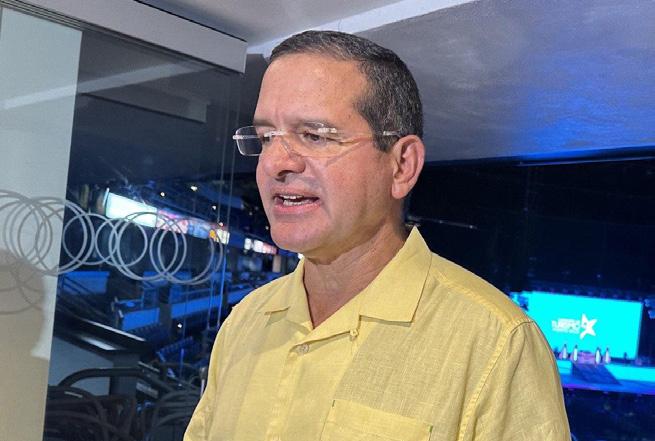
La querella no guarda relación con otra posterior referida al PFEI por el DJPR relacionada con el Municipio de Ceiba.
De acuerdo a la información sometida por el secretario de Justicia, Domingo Emanuelli Hernández, el asunto se inició con una querella presentada ante ese departamento por el actual alcalde, Hon. Samuel Rivera Báez, por una alegada infracción al Artículo 4.6 de la Ley de Ética Gubernamental.
El alcalde Rivera Báez sostuvo que advino en conocimiento de que el exalcalde trabaja para la compañía Global Consultas Asociados. Añadió, que el exalcalde había otorgado ocho (8) contratos a dicha compañía en el periodo comprendido entre el 5 de febrero de 2018 hasta el 31 de diciembre de 2020.
Al analizar la mencionada querella, el secretario Emanuelli Hernández determinó que las alegaciones sobre el exalcalde no se refieren a conducta desplegada mientras fue alcalde de Ceiba. Precisó que las mismas se relacionan con un alegado conflicto de interés, cuya sanción impuesta en el Artículo 4.6 de la Ley de Ética Gubernamental, no es de naturaleza penal.
En consecuencia, el Secretario informó que refirió este asunto a la atención de la Oficina de Ética Gubernamental (OEG) para que realice la investigación correspondiente y determine el curso de acción pertinente en el ámbito administrativo.
POR CYBERNEWSSAN JUAN – Un gran jurado federal en el Distrito de Puerto Rico emitió una acusación acusando a Nathalia Carolina Rosado de interferir con el personal de control de seguridad en el Aeropuerto Internacional Luis Muñoz Marín en Carolina, tras su arresto el 4 de enero de 2023.
Según documentos judiciales, el 24 de noviembre de 2022, Rosado agredió a dos empleados federales
del aeropuerto y de la compañía aérea que tenían funciones de seguridad dentro del aeropuerto, y dicha agresión interfirió con el desempeño de las funciones de los empleados y disminuyó la capacidad de los empleados para controlar el el acceso al puente de reacción de la aeronave y la prevención de la entrada de una persona no autorizada en el área protegida. La acusación formal alega que Rosado, una pasajera de Spirit Airlines, agredió a dos empleados de Spirit Airlines mientras intentaba entrar a la fuerza
en el puente del avión después de que la sacaron del avión.
“Incidentes como este son inaceptables y peligrosos porque no solo ponen en riesgo a los empleados federales, sino a todas las personas en el aeropuerto, empleados y viajeros”, dijo W. Stephen Muldrow, fiscal de los Estados Unidos para el Distrito de Puerto Rico en declaraciones escritas.
 By KYLE BUCHANAN
By KYLE BUCHANAN
Earlier this week, I got a text from a harried colleague. “I’m not ready for Oscar season,” she wrote.
I blinked for a second before responding. Ready? This season has been going for months!
Of course, I took her point: January ramps things up considerably, since we’re about to get televised awards shows (the Golden Globes on Tuesday followed by the Critics Choice Awards the following Sunday), nominations from the acting, directing and producing guilds, and then the all-important Oscar nominations, which will be announced Jan. 24.
But we can already make an educated guess about the titles we’ll hear that day, since your Projectionist has spent the past few months weighing valuable factors like voter buzz, box office battles, laurels from critics groups, below-the-line Oscar shortlists, and influential citations like the Gothams and the American Film Institute Awards. With all that in mind, I’ve arrived at a list of 10 movies that I think currently have the greatest shot at making the best picture lineup.
Still, this is an unusual year when even the strongest movies come with significant debits, which means there’s still room for big-budget entertainments (like “Babylon,” “Nope,” “Glass Onion: A Knives Out Mystery” and “Black Panther: Wakanda Forever”), foreign language films (including “RRR,” “Decision to Leave” and “All Quiet on the Western Front”), and indie films with strong performances (like “The Whale,” “Till,” “She Said” and “Aftersun”) to pull through. At this time last year, “CODA” looked like a middle-of-the-road contender, but a few consequential weeks later, it won enough hearts to clinch the best picture Oscar.
So consider these 10 films to merely be the starting lineup, ranked in descending order according to their certainty.
‘Everything Everywhere All at Once’
After making a film with sci-fi trappings and outlandish dildo fight scenes, the directors of “Everything Everywhere” never expected it to become an awards season sensation. Still, if you look under the hood, this movie has everything Oscar voters typi-
cally spark to: It’s a critically acclaimed box office hit with a veteran star in a showcase role (Michelle Yeoh), a wildly rootable actor making his long-awaited comeback (Ke Huy Quan), and an original, inventive story that concludes with a series of heartwarming scenes. The only downside (and it could prove to be a potent one) is that many older voters just can’t get past the aforementioned sci-fi trappings and dildo fight scenes, and the film’s appeal is therefore lost on them. Will the passion of the academy’s younger and hipper voters be enough to make up that shortfall and push “Everything Everywhere” to the top?
Although we may think of Steven Spielberg as an Oscar staple, it’s been more than two decades since he won his last statuette, for “Saving Private Ryan” (1998). If voters consider the most successful director of all time to be overdue for another little gold man, they might think it fitting to reward him for “The Fabelmans,” the most personal project he’s ever made. This semiautobiographical family drama was hobbled by headlines about its meager box office take, but it’s hardly the only prestige drama to struggle in theaters this year. And once the nominations are sorted, the film should fare very well on the preferential ballot for best picture, which
favors consensus crowd-pleasers.
‘The Banshees of Inisherin’
Could nearly half of the 20 acting nominations be sewn up by just two movies?
If “Everything Everywhere” overperforms, Yeoh, Quan, and supporting actresses Stephanie Hsu and Jamie Lee Curtis could all be nominated. Ditto Martin McDonagh’s “The Banshees of Inisherin,” which I think has an even better shot at earning nominations for all four of its principal actors: leading man Colin Farrell and his supporting co-stars Brendan Gleeson, Barry Keoghan and Kerry Condon. (Sadly, Jenny the donkey was not eligible last time I checked.) And although McDonagh failed to make it into the best director lineup for his last film, “Three Billboards Outside Ebbing, Missouri,” the stunningly photographed vistas of “Inisherin” ought to put him over the top this time.
‘Tár’
Don’t be fooled by the recent best picture wins for simple-pleasure dramedies like “CODA” and “Green Book”: There is still a significant bloc of highbrow voters within the academy, and I suspect “Tár” will serve as their standard-bearer. Todd Field’s ruthlessly contemporary drama about a disgraced conductor has already entranced critics: The New York Film Critics Circle and Los Angeles Film Critics Association both awarded
Cate Blanchett’s lead performance and voted “Tár” the best film of the year (although the West Coast group split the difference on the latter, claiming a tie between “Tár” and “Everything Everywhere”). Field made the best picture lineup back in 2002 for his first film, “In the Bedroom,” and voters will be pleased to see that their early bet on him has more than paid off.
James Cameron’s first “Avatar” was presumed to be the runner-up in 2010’s best picture race, which ultimately crowned his ex-wife Kathryn Bigelow’s military drama “The Hurt Locker.” Can “The Way of Water” succeed where the first film failed? I don’t think it’s got much of a chance at actually winning best picture, since Cameron has often said that the franchise is mapped out over five movies, and voters will probably wait until the far-off denouement to decide the ultimate worth of the series, as they did with the “Lord of the Rings” trilogy. Still, a long list of nominations is all but certain, since the movie is both a blockbuster triumph and a dazzling auteurist work that only Cameron could have pulled off.
‘Elvis’
It’s been 21 years since director Baz Luhrmann scored an Oscar breakthrough with the musical “Moulin Rouge” — which was nominated for eight Oscars and won two — and I expect he’ll be welcomed back in a big way for this glittery biopic of the iconic singer, played by surefire best actor nominee Austin Butler. One of the year’s only adult dramas to succeed in theaters, “Elvis” plays as if “Bohemian Rhapsody” were executed with actual panache, and Luhrmann’s maximalist aesthetic could even push him into the best director lineup, since that branch goes gaga for technical audacity.
‘
If a well-reviewed action sequel becomes the biggest movie of the year and helps bolster struggling theaters, shouldn’t that be enough to cram it into the best picture race? Well, that argument didn’t get “Spider-Man: No Way Home” into last year’s lineup, but domestic box office champ “Top Gun: Maverick” is already off to a better start, picking up best film nominations from the Golden Globes and Critics Choice Awards that elu-
ded Marvel’s web-slinger. But is this Tom Cruise star vehicle actually about something, or is it just a high-flying entertainment? Oscar voters tend to turn their nose up at action sequels — the only one nominated for best picture in the last 15 years was George Miller’s astonishing “Mad Max: Fury Road” — and the next phase of this awards campaign will have to convince them that there’s more to “Top Gun: Maverick” than meets the eye.
After “Parasite” won the Palme d’Or at the Cannes Film Festival nearly four years ago, the upstart film studio Neon successfu-
lly leveraged the movie’s international appeal and turned it into an awards-season darling. Can the studio pull off the same feat for Ruben Ostlund’s social satire “Triangle of Sadness,” which also took the Palme and similarly mines class warfare for big laughs and shocking set pieces? It helps that this cruise-ship comedy has a secret weapon in supporting-actress contender Dolly de Leon, who plays a maid-turned-despot: At a time when most contenders are still wary of ascribing too much weight to the controversial Golden Globes, the Filipina actress has drawn headlines for discussing how much the Globe nomination means to her, and many Oscar voters will be eager to extend

her awards-season moment.



After a big fall festival launch, Sarah
Polley’s well-reviewed Mennonite drama may have waited a little too long to come out in theaters: It was swallowed in limited release over the Christmas weekend, and will have a rough go expanding into new locations until the Oscar nominations are announced. Still, Polley is a respected actress-turned-director, the ensemble is filled with awards-friendly ringers like Claire Foy, Jessie Buckley and Frances McDormand, and the film’s bracing conversations about gender and sexual assault make a strong case for its relevance.
Gina Prince-Bythewood’s well-mounted action epic about female warriors in 19th-century Africa has an Oscar-winning star in Viola Davis and a lot of handsome tech elements, although I’m concerned that it didn’t manage to make the Oscar shortlists for its superlative costume design and hair and makeup. (At least Terence Blanchard’s thundering score made the cut in its category.) Next week’s Producers Guild nominations could foretell the film’s ultimate fate, since that group likes to recognize rousing theatrical successes and “The Woman King,” which earned a worldwide gross nearly double its $50 million budget, will almost certainly show up there if it’s got the mettle to impress awards voters.


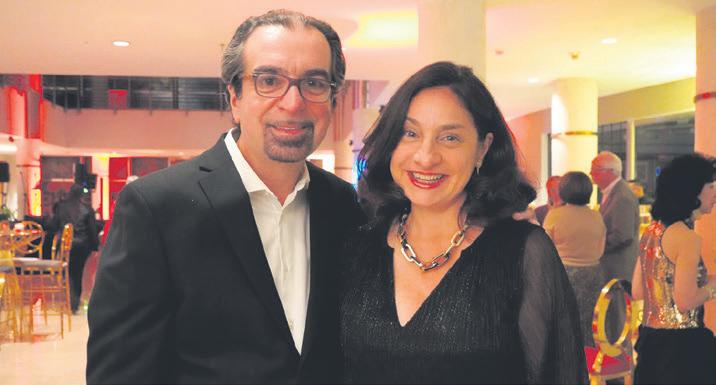
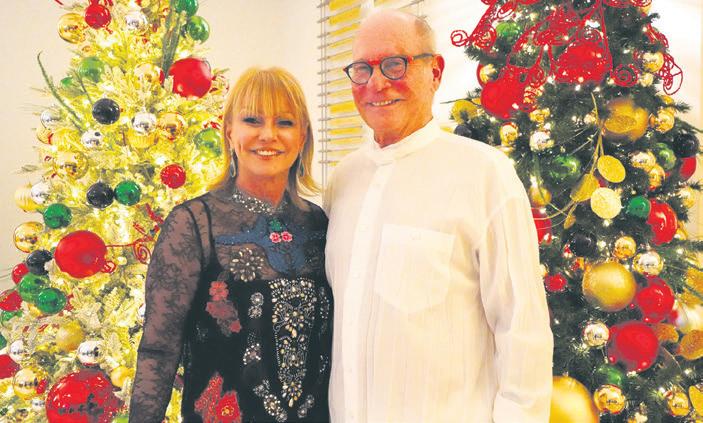

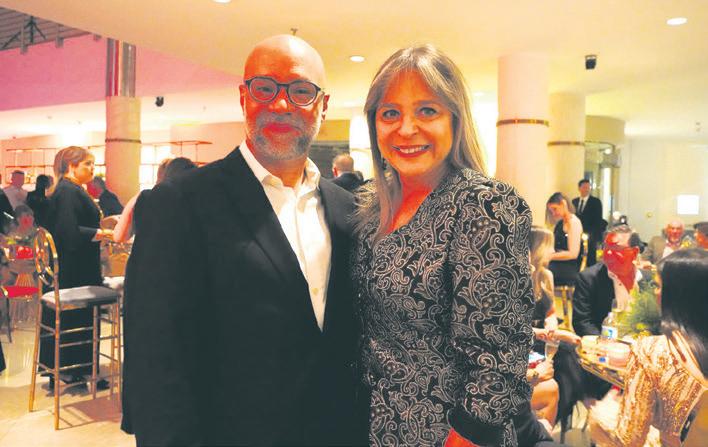 By JUDY GORDON-CONDE and JENNIFER CONDEPOWERS
By JUDY GORDON-CONDE and JENNIFER CONDEPOWERS

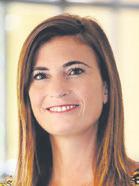
The Museum of Art of Puerto Rico was decked out in black and gold to celebrate the holidays with a spectacular “Navidad de Oro” Christmas Gala and Cocktail. Guests who attended this special event embraced the theme, dressed in the Gala’s colors, and shimmied across the beautifully decorated first-floor lobby of the museum, surrounded by sparkling decorations and holiday touches.



The memorable evening included passed champagne, delectable Puerto Rican hors d’oeuvres, and a delicious buffet by top Chef Marisoll Hernández. In the meantime, the music of Milly Quezada filled the room, and the guests danced the night away to the fabulous rhythms and sounds. The event’s profits raised funds for this much-loved museum, an iconic cultural destination in Puerto Rico.

The effect of social media use on children is a fraught area of research as parents and policymakers try to ascertain the results of a vast experiment already in full swing. Successive studies have added pieces to the puzzle, fleshing out the implications of a nearly constant stream of virtual interactions beginning in childhood.
A new study by neuroscientists at the University of North Carolina tries something new, conducting successive brain scans of middle-schoolers between the ages of 12 and 15, a period of especially rapid brain development.
The researchers found that children who habitually checked their social media feeds at around age 12 showed a distinct trajectory, with their sensitivity to social rewards from peers heightening over time. Teenagers with less engagement in social media followed the opposite path, with a declining interest in social rewards.
The study, published Tuesday in JAMA Pediatrics, is among the first attempts to capture changes to brain function correlated with social media use over a period of years.
The study has important limitations, the authors acknowledge. Because adolescence is a period of expanding social relationships, the brain differences could reflect a natural pivot toward peers, which could be driving more frequent social media use.
“We can’t make causal claims that social media is changing the brain,” said Eva H. Telzer, an associate professor of psychology and neuroscience at the University of North Carolina, Chapel Hill, and one of the authors of the study.
But, she added, “teens who are habitually checking their social media are showing these pretty dramatic changes in the way their brains are responding, which could potentially have long-term consequences well into adulthood, sort of setting the stage for brain development over time.”

A team of researchers studied an ethnically diverse group of 169 students in the sixth and seventh grades from a middle school in rural North Carolina, splitting them into groups according to how often they reported checking Facebook, Instagram and Snapchat feeds.
At around age 12, the students already showed distinct patterns of behavior. Habitual users reported checking their feeds 15 or more times a day; moderate users checked between one and 14 times; nonhabitual users checked less than once a day.
The subjects received full brain scans three times, at approximately one-year intervals, as they played a computerized game that delivered rewards and punishment in the form of smiling or scowling peers.
While carrying out the task, the frequent checkers
An adolescent uses their mobile phone, at home in Egan, Minn. on Oct. 28, 2021. Research shows that nearly all American teenagers engage with their peers through social media, with 97 percent going online every day and 46 percent reporting that they are online “almost constantly.”
showed increasing activation of three brain areas: rewardprocessing circuits, which also respond to experiences like winning money or risk-taking behavior; brain regions that determine salience, picking out what stands out in the environment; and the prefrontal cortex, which helps with regulation and control.
The results showed that “teens who grow up checking social media more often are becoming hypersensitive to feedback from their peers,” Telzer said.
The findings do not capture the magnitude of the brain changes, only their trajectory. And it is unclear, authors said, whether the changes are beneficial or harmful. Social sensitivity could be adaptive, showing that the teenagers are learning to connect with others, or it could lead to social anxiety and depression if social needs are not met.
Researchers in the field of social media warned against drawing sweeping conclusions based on the findings.
“They are showing that the way you use it at one point in your life does influence the way your brain develops, but we don’t know by how much, or whether it’s good or bad,” said Jeff Hancock, the founding director of the Stanford Social Media Lab, who was not involved in the study. He said that many other variables could have contributed to these changes.
“What if these people joined a new team — a hockey team or a volleyball team — so started getting a lot more social interaction?” he said. It could be, he added, that the researchers are “picking up on the development of extroversion, and extroverts are more likely to check their social media.”
He described the paper as “a very sophisticated
piece of work,” contributing to research that has emerged recently showing that sensitivity to social media varies from person to person.
“There are people who have a neurological state that means they are more likely to be attracted to checking frequently,” he said. “We’re not all the same, and we should stop thinking that social media is the same for everyone.”
Over the last decade, social media has remapped the central experiences of adolescence, a period of rapid brain development.
Nearly all American teenagers engage through social media, with 97% going online every day and 46% reporting that they are online “almost constantly,” according to the Pew Research Center. Black and Latino adolescents spend more hours on social media than their white counterparts, research has shown.
Researchers have documented a range of effects on children’s mental health. Some studies have linked the use of social media with depression and anxiety, while others found little connection. A 2018 study of lesbian, gay and bisexual teenagers found that social media provided them validation and support but also exposed them to hate speech.
Experts who reviewed the study said that because the researchers measured students’ social media use only once, around age 12, it was impossible to know how it changed over time or to rule out other factors that might also affect brain development.
Without more information about other aspects of the students’ lives, “it is challenging to discern how specific differences in brain development are to social media checking,” said Adriana Galvan, a specialist in adolescent brain development at UCLA, who was not involved in the study.
Jennifer Pfeifer, a professor of psychology at the University of Oregon and co-director of the National Scientific Council on Adolescence, said, “All experience accumulates and is reflected in the brain.”
“I think you want to put it into this context,” she said. “So many other experiences that adolescents have will also be changing the brain. So we don’t want to get into some kind of moral panic about the idea that social media” use is changing adolescents’ brains.
Telzer, one of the study’s authors, described the rising sensitivity to social feedback as “neither good nor bad.”
“It’s helping them connect to others and obtain rewards from the things that are common in their social world, which is engaging in social interactions online,” she said.
“This is the new norm,” she added. “Understanding how this new digital world is influencing teens is important. It may be associated with changes in the brain, but that may be for good or for bad. We don’t necessarily know the long-term implications yet.”

and spread out on a baking sheet to cool.
3. Put 3 tablespoons olive oil in a large skillet over medium-high heat. When the oil is wavy, add leeks and stir to coat. Season with salt and pepper. Let leeks cook briskly, stirring frequently until soft but still bright green, about 5 to 8 minutes. Turn heat to medium, stir in chopped garlic, thyme, pimentón and cayenne.
4. Add saffron and soaking water, the chopped tomato and vinegar. Turn heat to high and let everything simmer for a few minutes. Pour contents of skillet into Dutch oven with lentils. Add the reserved potatoes.
5. Bring to a boil, then reduce to a simmer. Cook covered with lid ajar for about 10 minutes. Taste and adjust seasoning, then cook for 10 more minutes. The lentils will be quite soft and the potatoes will start to break. Discard onion and thyme sprig.
6. Finish with a drizzle of extra-virgin olive oil and chopped parsley, if you wish.
2. Chicken and herb salad with nuoc cham
1. In a large bowl, combine the sugar and 1/4 cup water. Whisk to dissolve the sugar. Add the garlic, chile, lime juice and fish sauce. Stir to combine.
2. Add the chicken, cabbage, cucumbers and bell pepper to the dressing. Toss to coat. Add the leafy greens and the basil and mint leaves. Toss to combine.
3. Divide the salad among bowls, garnish with the crispy shallots and serve immediately.
This week has been a time to hibernate, braise and simmer, with wild weather across the country in addition to the usual interholiday lull. But next week brings the start of 2023 and, for most, a return to routine. It’s a time for easy food — and recipes that help clear your kitchen and your head. If you stockpiled root vegetables, alliums, herbs, greens and the like for holiday cooking, the recipes below will help you face the future. Cheers!
Rustic with deep flavor, this stew improves after a day in the fridge. Make the whole recipe, and eat it over several days — or freeze it for later. If you can’t get small Spanish Pardina lentils or French lentilles du Puy, use any size green or brown lentil. (Carnivores may want to add chorizo or jamón.) The stew is rather brothy at first, but thickens upon sitting. Thin with a little water when reheating, as necessary. For optimum results, be sure to use fruity, zesty-tasting extra-virgin olive oil — it really makes a difference.
By David TanisYield: 6 servings
Total time: 1 hour
Ingredients:
1 1/2 cups small lentils, such as Pardina or Puy (12 ounces), or use any size green or brown
lentil
1 medium onion, halved, plus 2 bay leaves and 2 whole cloves
Kosher salt and black pepper
4 or 5 medium potatoes, peeled and sliced
3/4-inch thick
3 tablespoons extra-virgin olive oil, plus more for drizzling
2 medium leeks, white and tender green parts, chopped in 1/2-inch pieces
1 teaspoon chopped garlic
1 large thyme or rosemary sprig
2 tablespoons pimentón dulce or smoked sweet paprika
1/8 teaspoon ground cayenne, or to taste
Small pinch of saffron (about 12 strands), soaked in 1/4 cup cold water
1 cup chopped canned tomato with juice
2 tablespoons sherry vinegar
Chopped parsley (optional)
Preparation:
1. Rinse lentils. Put them in a Dutch oven or large, heavy-bottomed pot and add 8 cups water. Pin a bay leaf to each onion half using a whole clove and add to the pot. Bring to a boil over high heat, add a large pinch of salt, then reduce heat to a simmer. Cook with lid ajar for about 30 minutes, until soft. Turn off heat.

2. Meanwhile, bring a medium pot of salted water to boil, and cook the potato slices until just done, about 10 minutes, then drain
Nuoc cham, a Vietnamese sauce bright with lime juice and chile, is tossed into this simple, satisfying salad to give it a salty-sweet finish. Thinly sliced bell pepper and shaved cabbage provide crunch, while meat pulled from a store-bought rotisserie chicken — or any leftover chicken — soaks up the dressing. Serve this by itself, or alongside steamed rice or room-temperature cooked rice vermicelli. By Yewande Kolomafe Yield: 4 servings
Total time: 5 minutes
Ingredients:
2 tablespoons sugar
1 garlic clove, minced
1 bird’s-eye chile or other small hot chile, minced with seeds
1/4 cup fresh lime juice (from 2 limes)
3 tablespoons fish sauce
3 loosely packed cups chicken meat (12 ounces, pulled from store-bought rotisserie chicken or roast chicken)
2 cups thinly sliced red or green cabbage
1 small English cucumber, thinly sliced (about
1 1/2 cups)
1 medium bell pepper (any color), thinly sliced
1 1/2 cups peppery leafy greens, such as watercress with tender stems, arugula or mizuna
1 loosely packed cup Thai or sweet basil leaves
1 loosely packed cup mint leaves
1/2 cup crispy fried shallots or onions, storebought or homemade
Roasted
shallots,
In this colorful, crunchy-topped vegetable dish, roasted carrots and shallots are topped with puddles of gooey mozzarella, while herbs, olives and a big squirt of lemon at the end add just the right level of tang. Serve this as a light, meatless meal on its own, or as a vibrant side dish to a simple roast chicken or fish.
By Melissa Clark
Yield: 4 servings
Total time: 1 hour
Ingredients:
1 1/2 pounds carrots, peeled and halved, or quartered lengthwise into long, thin sticks
5 small or 3 large shallots, peeled and cut lengthwise into 1/2-inch-thick wedges (about 1 1/4 cups)
Salt and freshly ground black pepper
5 tablespoons extra-virgin olive oil
1 cup panko breadcrumbs
2 tablespoons grated Parmesan
1 fat garlic clove, minced or finely grated 1/4 teaspoon red-pepper flakes, plus more for serving
6 ounces mozzarella, hand-pulled or chopped into small pieces (1 1/2 cups)
1/4 cup green olives, pitted and rough chopped
1 to 2 tablespoons freshly squeezed lemon juice, plus more to taste
1/3 cup fresh basil, dill or mint, torn
Preparation:
1. Heat oven to 425 degrees. Place carrots and shallots on a rimmed baking sheet. Season with salt and pepper, and toss with 2 tablespoons olive oil until well coated. Roast for 25 minutes, rotating pan halfway through. (The shallots will start to shrivel and brown at the edges, but they won’t be cooked through yet.)
2. In a small bowl, stir together breadcrumbs, Parmesan, garlic, red-pepper flakes,
remaining 3 tablespoons oil and a pinch of salt, tossing until well combined.
3. Sprinkle mozzarella and olives all over carrots and shallots, then top with the seasoned breadcrumbs. Continue to roast until the vegetables are golden brown and tender, 12 to 15 minutes longer. Just before serving, drizzle lemon juice all over the top and garnish with herbs.
This recipe, adapted from a dish served at MeMe’s Diner in Brooklyn, is a brunch power move. Eggs sit atop wilted greens on a bed of yogurt, all surrounded by seeded chile oil. The fresh yogurt cuts through the chile oil’s heat, and the seed mix adds layers of flavor and crunch. If you’re feeling lazy — it is brunch after all — skip the greens, or use everything spice mix and peanuts, for the seed mix. But don’t skimp on the chile oil: It’s the best part. Scale it up to have extra on hand for future use, or use store-bought if you like. (You’ll need about 1 cup for four servings.) Serve with toast, to sop up the extra oil.
Recipe from MeMe’s Diner
Adapted by Krysten Chambrot
Yield: 4 servings
Total time: 30 minutes, plus cooling
Ingredients:
For the chile oil:
3 tablespoons red-pepper flakes
1 small cinnamon stick
1 whole star anise
3/4 teaspoon green cardamom pods (about 15 pods), optional
1/2 teaspoon whole fennel seeds
1/4 teaspoon whole black peppercorns
1 cup neutral oil, such as canola or safflower
1 garlic clove, peeled and smashed
1 (1/4-inch) piece fresh ginger, thinly sliced (optional)
For the seed mix:
2 tablespoons black or white sesame seeds (or a mix)

2 tablespoons pepitas or sunflower seeds (or a mix)
2 tablespoons whole roasted, salted peanuts
1 1/2 teaspoons garlic flakes, chopped dried garlic chips or onion flakes
for the sautéed kale:
2 tablespoons neutral oil, such as canola, plus more as needed
1 large bunch curly kale (about 1/2 pound), stems removed and leaves torn into bite-size pieces
Kosher salt
1 tablespoon apple cider vinegar, champagne vinegar or white vinegar
1/2 tablespoon toasted red-pepper flakes (from the bottom of the chile oil)
For the eggs: Neutral oil, such as canola 4 to 8 eggs
For assembly: 1 cup plain Greek yogurt, at room temperature Flaky sea salt
Preparation:
1. Make the chile oil (or skip to Step 4 if using store-bought chile oil): Add red-pepper flakes to a heatproof container that can balance a fine-mesh sieve and comfortably hold at least 1 cup oil. (A 12- or 16-ounce Mason jar works well.) Set aside. In a medium saucepan over medium heat, toast cinnamon stick, star anise, cardamom (if using), fennel seeds
and peppercorns, gently shaking the pan, until fragrant, 2 to 3 minutes.
2. Add oil, garlic and ginger (if using), reduce the heat to low and allow the oil to come to a gentle simmer. Cook until the garlic is deeply golden brown and the ginger is tender, about 20 minutes. (The longer and more gently it cooks, the more flavorful the oil will be.)
3. Carefully pour hot oil through sieve directly onto the red-pepper flakes, which will sizzle and fry in the hot oil. Discard strained spices. (You should have a little more than 1 cup oil.) Allow mixture to cool at least 1 hour or, for the best flavor, make it the night before.
4. As chile oil simmers, prepare the seed mix: Heat oven to 425 degrees. On a rimmed sheet pan, lay out sesame seeds and pepitas in a single layer, transfer to the oven and toast until golden and fragrant, about 6 minutes. Let cool slightly, then mix in peanuts and garlic flakes. Set aside.
5. Prepare the sautéed kale: In a large skillet over medium heat, warm oil until it shimmers. Add kale to the skillet, a couple of handfuls at a time, stirring to combine and adding more kale to the skillet as it wilts and space permits. (Kale will release liquid, but if you think it needs more oil, add it to the pan.) When the last batch has been added, season generously with salt. Add vinegar and about 1/2 tablespoon red-pepper flakes scooped from the chile oil, and stir to incorporate. You want some wilted bits and some crunchier drier bits. Set over low heat as you fry your eggs.
6. Prepare the eggs: In another large nonstick skillet over medium-high, heat 1 tablespoon neutral oil. Working in batches, cook 1 to 2 eggs per person, adding oil as needed, until the yolk is a desired consistency, 2 to 3 minutes for sunny-side up.
7. Plate the dish: Dollop about 1/4 cup yogurt onto the center of each plate, spread it in a circle, leaving space around the edge of the plate for the seeded oil and a divot in the middle for the greens. Spoon 3 to 4 tablespoons chile oil around the edge of the yogurt, and sprinkle seed mix over the oil. Divide warm greens on top of yogurt, and top with eggs. Sprinkle with flaky sea salt and serve immediately.
cut perpendicular to the spine, into small steaks, will do nicely. Marinated quickly in a simple spice paste, and shallow-fried, the fish becomes golden and crisp all over, and takes on the flavors of caramelized ginger and garlic, browned coriander seeds and red chile. Be sure to use a nonstick pan, or a well-seasoned cast-iron pan, to keep the fish from sticking or the marinade from falling off.
Recipe from Archana Pidathala
Adapted by Tejal Rao
Yield: 4 to 6 servings
Total time: 30 minutes
Ingredients:
4 large garlic cloves, peeled
1 2-inch piece ginger, peeled and roughly sliced
1 teaspoon red-chile powder
1 teaspoon freshly ground black pepper
1 teaspoon ground coriander
1/2 teaspoon turmeric
2 1/2 teaspoons kosher salt
1 tablespoon lime juice
3/4 cup all-purpose flour, rice flour or semolina
2 pounds fish steaks, such as bass, haddock, mackerel or swordfish, cut into about 6 1-inchthick slices
6 tablespoons neutral oil
1 lime, cut into wedges
1 handful cilantro sprigs
Preparation:
1. Using a mortar and pestle or a food processor, grind the garlic and ginger into a smooth paste, using a splash of water if necessary to catch the blade. Add the chile powder, black pepper, coriander, turmeric, 2 teaspoons of salt and lime juice, and mix until smooth. Add a scant tablespoon of water if the spice mix is packed and dry (it should be thick, but you should be able to easily spread it over the fish with your fingers).
2. Add flour and 1/2 teaspoon of salt to a plate, mix well and roll the fish pieces around in it, coating each in flour. Shake off any excess flour, then gently rub the spice paste all over the floured fish pieces. Cover, and set aside to marinate for about 15 minutes.
Chile-oil fried eggs with greens and yogurt, in New York, April 9, 2020. If you already have chile oil in the pantry, this brunch plate makes a quick and spectacular dinner with warmed flatbread or seeded whole-grain toast. Food Stylist: Julia Gartland.
As Indian cookbook author Archana Pidathala worked to translate and rewrite her grandmother’s collection of recipes from Andhra, in southeastern India, one of the first dishes she mastered was chepa vepudu, a simple fish fry. In Kurnool, where Pidathala grew up, her family would eat the spicy, crisp fish dish when there was a fresh catch of murrel available, also called bull’s-eye snakehead, a delicious freshwater fish. But almost any fish,
3. Heat oil in a wide, shallow nonstick pan, or seasoned cast-iron pan, over medium heat. When the oil is hot, slide the fish pieces into the pan, and cook for 3 to 4 minutes, then carefully flip over to cook another 3 to 4 minutes on the other side. The spice paste should be evenly browned and crisp in places, and the fish should be cooked through. (If the pan is small, don’t crowd it. Cook the fish in batches, removing any burning spice paste remaining in the pan after each batch, and adding more oil as needed.) Transfer cooked fish to a paper towel to drain, then to a serving platter with the lime wedges and cilantro sprigs.
The San Juan Daily Star January 6-8, 2023 23IN THE UNITED STATES DISTRICT COURT FOR THE DISTRICT OF PUERTO RICO.
CIELO VIVIENDA LLC
Plaintiff, vs. LUIS CORTES -ALEJANDRO, HIS WIFE, IRMA IRIS ANDINO-ORTIZ AND THE CONJUGAL PARTNERSHIP
Defendants
CIVIL NO. 19-1548 (RAM). RE: COLLECTION OF MONIES, FORECLOSURE OF MORTGAGE. NOTICE OF SALE.

TO: LUIS CORTESALEJANDRO, HIS WIFE, IRMA IRIS ANDINO-ORTIZ AND THE CONJUGAL PARTNErSHIP CONSTITUTED THEREIN AND THE PUBLIC IN GENERAL:
UNITED STATES OF AMERICA, PRESIDENT OF THE UNITED STATES, COMMONWEALTH OF PUERTO RICO.
SS. Judgment in favor of plaintiff for the sum of 161,937.16, plus accrued interest at a rate of four-point five percent (4.5%) per annum from May 17,2019 until the debt is paid full, in the lates charges, all advances under mortgage note, cost and attorney’s fees; Pursuant to the judgment, the undersigned Special Master was ordered to sell at public auction for United States currency in cash or certified check without appraisement or right of redemption to the highest bidder and at the office of the Clerk of the United States District Court for the District of Puerto Rico, Federico Degetau Federal Building, Chardón Street, Hato Rey, San Juan, Puerto Rico or any other place designated by said Clerk, to cover the sums adjudged to be paid to the plaintiff, the following property:
URBANA: Solar numero catorce (14) de la manzana DD de la Urbanización Santiago Iglesias Pantín, Barrio Frailes de Guaynabo, con un área de quinientos doce punto diez (512.10) metros cuadrados. En lindes por el NORTE, con la calle catorce (14), en dieciséis punto diez (16.10) metros; por el SUR, con solar numero quince (15), en veintiséis punto cincuenta y seis (26.56) metros; por el ESTE, con la calle número catorce guion A (14-A), en Veintiuno punto cincuenta y ocho (21.58) metros; OESTE, con el solar numero trece (13), en treinta y siete punto treinta
y siete (37.37) metros. Consta inscrita al folio 7 del tomo 94 de Guaynabo, finca número 8,925, Registro de la Propiedad Sección de Guaynabo. Physical address: 14 DD Santiago Pantín Guaynabo, Puerto Rico 00966. The property is subject to the following Senior liens: DORAL BANK: In the favor appears a notation of demand, issued on May 8, 2013, in the Court of First Instance, Superior of Guaynabo, civil case # DCD2013-1257, followed by Doral Bank versus Luis Cortes Alejandro y Irma Andino Ortiz, for the sum of $148,480.54 and other expenses. Recorded on folio 112 of volume 1529 of Guaynabo, farm 8,925, Annotation A on July 241, 2015. Potential bidders are advised to verify the extent of preferential liens with the holders thereof. It shall be understood that each bidder accepts as sufficient the title and that prior or preferential liens to the one being foreclosed upon, including but not limited to any property tax liens (express, tacit, implied or legal), or homeowner associations dues, to the extent specified under the applicable Condominium Law, shall continue in effect. It being understood that the successful bidder accepts them and is subrogated in the responsibility for the same and that the bid price shall not be applied toward their cancellation. The present property will be acquired free and clear of all junior liens. THEREFORE, the first public sale shall be held on the JANUARY 20th ,2023, at the 10:30 a.m.”, and the minimum bid that will be accepted is the sum of $148,702.70. In the event said first public auction does not produce a bidder and the properties is not adjudicated, a second public auction shall be held on the JANUARY 27th, 2023, at the 10:30 a.m. and the minimum bid that will be accepted is the sum of $99,135.13, 2/3 parts of the minimum bid for the 1st public sale. If said second auction does not result in the adjudication and sale of the property, a third auction will be held on the FEBRUARY 3rd, 2023, at the 10:30 a.m. and the minimum bid that will be accepted is the sum of $74,351.35, ½ of the minimum bid for the 1st public sale. Upon confirmation of the sale, an order shall be issued canceling all junior liens. For further particulars, reference is made to the judgment entered by the Court in this case, which can be examined in the Office of the Clerk of the United States District Court, Federal
Building, Chardon Avenue, Hato Rey, Puerto Rico. In San Juan, Puerto Rico, on November 30th, 2022. Aguedo de la Torre, Special Master.
IN THE UNITED STATES DISTRICT COURT FOR THE DISTRICT OF PUERTO RICO BAUTISTA REO PR CORP.
Plaintiff V.
Defendant Civil No.: 3:20-cv-01253. (DRD). FORECLOSURE OF MORTGAGE AND PLEDGEIN REM. NOTICE OF SALE.
To: DEFENDANT AND GENERAL PUBLIC.
On January 4, 2021, this Court entered Default Judgment in favor of Bautista Cayman Asset Companny, now Bautista REO PR Corp. To date, Defendants have not satisfied the Judgment. Consequently, there is an outstanding balance of: (i) $151,861.20 in principal; plus (ii) accrued interests in the amount of $50,690.39, which continue to accrue daily at a rate of $33.75, until full payment of the debt; plus (iii) accrued late charges in the amount of $4,210.02; plus (iv) other costs in the amount of $8,024.50; plus (v) any other advance, charge, fee or disbursements made by Bautista on behalf of Defendant in accordance with the Mortgage Note, the Loan Agreement, as well as under the other loan documents, plus (vi) costs and agreed attorney’s fees under the Mortgage Note in the amount of $20,000.00.
Pursuant to said judgment and/or the Order of Execution of Judgment, the undersigned appointed Special Master was ordered to sell, at public auction for U.S. currency in cash or certified check, without appraisement or right to redemption, to the highest bidder, at the office of the Clerk of the United States District Court for the District of Puerto Rico, Room 150 - Federal Building, 350 Carlos Chardón Avenue, Hato Rey, Puerto Rico, or at any other place designated by said Clerk, to cover the sums adjudged to be paid to the plaintiff, the following property: URBAN: Plot located in the Monacillos Ward of the Municipality of Rio Piedras before, today San Juan, Puerto Rico marked with the number 26-B of the AQ block of the Caparra Te-
rrace Development, with a surface area of 237.50 square meters. In borders by the NORTH, in 9.50 meters, with the street 122 of the Development; by the SOUTH at 9.50 meters with lot 5 of the AQ block; on the EAST, at 25.00 meters with lot 26-A of the AQ block; and on the WEST, at 25.00 meters with lot 27 of the AQ block. Contains a house. The property described above is recorded at page 58 of volume 417 of Monacillos, property number 15,714, Registry of Property of San Juan, Third Section. The Property is described in the Spanish language as follows: URBANA: Solar sito en el Barrio Monacillos de la Municipalidad de Rio Piedras antes, hoy San Juan, Puerto Rico marcado con el numero 26-B de la manzana AQ de la Urbanización Caparra Terrace, con un área superficial de 237.50 metros cuadrados. En lindes por el NORTE, en 9.50 metros, con la calle 122 de la Urbanización; por el SUR en 9.50 metros con el solar 5 de la manzana AQ; por el ESTE, en 25.00 metros con el solar 26-A de la manzana AQ; y por el OESTE, en 25.00 metros con el solar 27 de la manzana AQ. Enclava una casa. The property described above is recorded at page 58 of volume 417 of Monacillos, property number 15,714, Registry of Property of San Juan, Third Section. The property is subject to the following liens: BY ITS ORIGIN: PUERTO RICO RAILROAD LIGHT AND POWER AUTHORITY; RESTRICTIVE CONDITIONS OF USE AND CONSTRUCTION. BY ITSELF: MORTGAGE in guarantee of note in favor of DORAL BANK, or to its order, in the principal amount of $200,000.00, with a yearly interest rate of 8%, due on demand as per Deed No. 153, executed in San Juan, Puerto Rico, on May 20, 2005, before Notary Public Nicolás A. López Peña, recorded at page 216 of volume 1036 of Monacillos, 11th inscription. MORTGAGE MODIFICATION: The object of this modification is the Mortgage for $200,000.00, which arises from registration 11th thru deed # 2, on March 9, 2011, before the Notary Public Maga Vanessa Alsina Figueroa, recorded on page 216, volume 1036 of Monacillos, 12th inscription. Potential bidders are advised to verify the extent of preferential liens with the holders thereof. It shall be understood that each bidder accepts as sufficient the title and that prior and preferential liens to the one being foreclosed upon,
including but not limited to any property tax, liens, (express, tacit, implied or legal), shall continue in effect. It being understood further that the successful bidder accepts them and is subrogated in the responsibility for the same and that the bid price shall not be applied toward their cancellation. The lien executed is over the property, and for the purposes of the first judicial sale the minimum bid amount is as follows: The amount of $200,000.00, as set forth in the mortgage deed, shall serve as the minimum bidding amount for the first public sale. Should the first public sale fail to produce an award or adjudication, two-thirds of the aforementioned amount or $133,333.33 shall serve as the minimum bidding amount for the second public sale. Should there be no award or adjudication at the second public sale, the minimum bidding amount for the third public sale shall be $100,000.00. Said sale to be made by the appointed Special Master is subject to confirmation by the United States District Court for the District of Puerto Rico and the deed of conveyance and possession to the property may be executed and delivered after the judicial sale. Upon confirmation of the sale, an order shall be issued canceling all junior liens. THEREFORE, public notice is hereby given that the appointed Special Master, pursuant to the provisions of the Judgment herein before referred to, will, on the FEBRUARY 17, 2023, AT 10:35 A.M., in the Office of the Clerk of the United States District Court for the District of Puerto Rico, Room 150 - Federal Building, 350 Carlos Chardón Avenue, Hato Rey, Puerto Rico, will sell at public auction to the highest bidder the property described herein, the proceeds of said sale to be applied in the manner and form provided by the Court’s Judgment. Should the first judicial sale set hereinabove be unsuccessful, the SECOND JUDICIAL SALE of the property described in this Notice will be held on the FEBRUARY 24, 2023, AT 10:35 A.M., in the Office of the Clerk of the United States District Court for the District of Puerto Rico, Room 150 - Federal Building, 350 Carlos Chardón Avenue, Hato Rey, Puerto Rico. Should the second judicial sale set hereinabove be unsuccessful, the THIRD JUDICIAL SALE of the property described in this Notice will be held on the MARCH 3, 2023, AT 10:35 A.M., in the
Office of the Clerk of the United States District Court for the District of Puerto Rico, Room 150 - Federal Building, 350 Carlos Chardón Avenue, Hato Rey, Puerto Rico. The records of the case and of these proceedings may be examined by the parties at the Office of the Clerk of the United States District Court, Federal Building, Chardón Avenue, Hato Rey, Puerto Rico. In San Juan, Puerto Rico, this 6th day of December, 2022. AGUEDO DE LA TORRE, APPOINTED SPECIAL MASTER.
ESTADO LIBRE ASOCIADO DE PUERTO RICO TRIBUNAL DE PRIMER INSTANCIA SALA DE SUPERIOR DE FAJARDO GOBIERNO MUNICIPAL AUTÓNOMO DE FAJARDO, REPRESENTADO POR SU ALCALDE, JOSÉ A. MELÉNDEZ MÉNDEZ Peticionario V. ADQUISICIÓN DE FINCA 13,908 DE LA CALLE AMPARO, DEL TÉRMINO MUNICIPAL DE FAJARDO; PETRA GUERRA CARRERAS ET ALS.
Partes con Interés Civil Núm.: FA2022CV00742. Sobre: EXPROPIACIÓN FORZOSA. EDICTO. ESTADOS UNIDOS DE AMÉRICA, EL PRESIDENTE DE LOS EE.UU., EL ESTADO LIBRE ASOCIADO DE P.R., SS.
Se le emplaza y notifica que, con el fin público de erradicar el abandono y peligrosidad de propiedades declaradas estorbos públicos, el Municipio de Fajardo ha radicado en esta Secretaría una Petición de Expropiación Forzosa al amparo de la Ley General de Expropiación Forzosa del 12 de marzo de 1903, según enmendada, la Ley Núm. 107 de 14 de agosto de 2020 conocida como el Código Municipal de Puerto Rico, en su Artículo 2.018 [21 L.P.R.A. §7183]; la Ordenanza Número 26, Serie 2014-2015, aprobada por la Legislatura Municipal de Fajardo, Puerto Rico el 4 de septiembre de 2014 y firmada por el su Alcalde el día 30 del mismo mes; y, la Ordenanza Número 13, Serie 2021-2022, aprobada por la Legislatura Municipal el 4 de noviembre de 2021 y por el que suscribe el
día 28 del mismo mes; para adquirir la siguiente Finca: URBANA: Solar radicado en la Calle AMPARO número 155 del Municipio de Fajardo, Puerto Rico, con una cabida superficial de 118.15 metros cuadrados; y, en lindes por el NORTE, en 13.50 metros, con un solar ocupado por Petra Guerra; por el SUR, en 12.80 metros, con el solar número 153; por el ESTE, en 9.35 metros, con el solar ocupado por Herminio Cardona y por el OESTE, en 8.60 metros, con la Calle Amparo. FINCA NÚMERO 13,908, INSCRITA al FOLIO 166 del TOMO 321 de Fajardo. Catastro Número: 150046-044-20-001. Existiendo una Deficiencia de Deficiencia de $15,023.93, no se ha consignado cantidad alguna por la adquisición de dicha propiedad, la cual se tasó en $9,000.00. No habiéndose podido emplazar personalmente a las partes con interés antes relacionadas, por desconocer su paradero, este Tribunal ha ordenado que se le emplace por edicto, el cual se publicará una (1) vez por semana, durante tres (3) semanas consecutivas en un periódico de circulación diaria en Puerto Rico. Se le notifica que, si usted desea presentar objeción o defensa a la incautación de las estructuras descritas, debe presentar su contestación en este Tribunal dentro del término de 30 DÍAS, contados a partir de la última publicación de este edicto, debiendo notificar con copia de la misma a la parte peticionaria, a través de la LCDA. JOSEPHINE M. RODRÍGUEZ RÍOS - RUA 15,736: PO BOX 889 FAJARDO, PR 00728 Email: josephine.rodriguez@gmail.com. Tribunal ha señalado la vista del caso para el día 6 de abril de 2023, a las 10:00, en la Sala 307, en cuyo día se determinará el justo valor de la propiedad y las partes a ser compensadas. A dicha vista podrá usted comparecer y ofrecer prueba de valoración, aunque no haya contestado la petición. De no comparecer, el Tribunal dictará Sentencia declarando CON LUGAR la Petición de Expropiación Forzosa en todas sus partes, sin más citación ni vista. Expedida por Orden del Tribunal, en Fajardo, Puerto Rico a 21 de diciembre de 2022. WANDA I. SEGUÍ REYES, SECRETARIA REGIONAL. LINDA I. MEDINA MEDINA, SUB-SECRETARIA.
ESTADO LIBRE ASOCIADO DE PUERTO RICO TRIBUNAL DE PRIMERA INSTANCIA
SALA SUPERIOR DE BAYAMÓN
EX - PARTE PETICIONARIO Civil Núm.: BY2022CV05250. Sobre: EXPEDIENTE DOMINIO. EDICTO. ESTADOS UNIDOS DE AMÉRICA, EL PRESIDENTE DE LOS ESTADOS UNIDOS, EL ESTADO LIBRE ASOCIADO DE PUERTO RICO, SS.
A: PERSONAS IGNORADAS, SUCESIÓN DE JOSÉ MARCELO SANTIAGO, COMPUESTA POR: ERNESTO SANTIAGO CRUZ, CORNELIO SANTIAGO CRUZ, FRANCISCA SANTIAGO CRUZ, CORNELIA SANTIAGO CRUZ, FÉLIX SANTIAGO CRUZ; SUCESIÓN DE FÉLIX SANTIAGO CRUZ, COMPUESTA POR: EDWARD SANTIAGO CORDERO, ALEX SANTIAGO CORDERO, JESÚS MIGUEL SANTIAGO CORDERO, EDUEE SANTIAGO CORDERO, MELVIN SANTIAGO CORDERO; SUCESIÓN DE JOSÉ FIGUEROA ELÍAS.
Por la presente se le notifica a usted que se ha presentado ante este Tribunal el expediente arriba mencionado, con el fin de justificar e inscribir a favor del Promovente, el dominio que tiene sobre la siguiente finca: “RÚSTICA”: Predio de terreno radicado en el barrio Achiote del término municipal de Naranjito, Puerto Rico, con una cabida superficial de MIL OCHENTA Y TRES PUNTO CERO, QUINIENTOS TREINTA Y SIETE METROS CUADRADOS (1,083.0537 mc), equivalentes a CERO PUNTO DOS MIL SETECIENTOS CINCUENTA Y SEIS CUERDAS (0.2765 cdas), en lindes por el NORTE, con servidumbre de paso y Edwin Rodríguez, por el SUR, con José Marcelo Santiago Pacheco, por el ESTE, con José Marcelo Santiago Pacheco y por el OESTE, con Sucesión de José Figueroa Elias. Enclava estructura para fines residenciales. Alega la parte Peticionaria que adquirió la finca descrita mediante escritura número 50, otorgada el 23 de agosto de 2022, en Naranjito, Puerto Rico, ante el Notario Jorge Manuel Díaz Rodríguez. Es abogado de la parte Peti-
PEDRO G. SILVESTRE RODRÍGUEZ A/K/A PEDRO GONZÁLEZ SILVESTRE RODRÍGUEZ A/K/A PEDRO GONZÁLEZ
Demandados Civil Núm.: DCD2016-1913.
Sobre: COBRO DE DINERO Y EJECUCIÓN DE HIPOTECA POR LA VÍA ORDINARIA. AVISO DE VENTA EN PÚBLICA SUBASTA. Yo, EDGARDO
ELÍAS VARGAS SANTANA, ALGUACIL AUXILIAR PLACA #193, Alguacil de la División de Subastas del Tribunal de Primera Instancia, Sala de Bayamón, a la demandada y al público en general, les notifico que, cumpliendo con un Mandamiento que se ha librado en el presente caso, por el Secretario del Tribunal, con fecha 13 de agosto de 2019 y para satisfacer la Sentencia por la cantidad de $87,311.21 de principal; dictada en el caso de epígrafe el 10 de agosto de 2017, Enmendada Nunc Pro Tunc el 3 de diciembre de 2018, notificada y archivada en autos el 5 de marzo de 2019, notificada a la parte demandada y publicada mediante edicto el 11 de marzo de 2019 en el periódico “The San Juan Daily Star”; procederé a vender en pública subasta, al mejor postor en pago de contado y en moneda del curso legal de los Estados Unidos de América, todo derecho, título e interés que haya tenido, tenga o pueda tener la deudora demandada en cuanto a la propiedad localizada en el: Municipio de Bayamón, Puerto Rico, el bien inmueble que se describe a continuación: Urb. Caná, 23 PP Calle 5, Bayamón, PR 00958-6240. URBANA: Solar #23 del Bloque PP de la urbanización Residencial Caná, localizada en el Barrio Cerro Gordo del término municipal de Bayamón, con una cabida superficial de 300.15 metros cuadrados.
En lindes por el NORTE, en una distancia de 23.05 metros, con el mall que los separa de los solares #9 y #10 del bloque PP; por el SUR, en una distancia de 13.05 metros, con la calle #5; por el ESTE, en una distancia de 23.00 metros, con el solar #24 del bloque PP y por el OESTE, en una distancia de 23.00 metros con el solar #22 del bloque PP. Inscrita al folio 111 del tomo 729 de Bayamón Sur, finca 33397, Registro de la Propiedad de Bayamón Sección I. Con el importe de dicha venta se habrá de satisfacer a la parte demandante las cantidades adeudadas, según la Sentencia dictada en el caso de epígrafe, por el Tribunal de Primera Instancia, Sala de Bayamón, cuyas cantidades ascienden a $87,311.21 de principal, 5.95% de intereses,
los cuales continúan acumulándose hasta el saldo total de la deuda; $167.02 de gastos por mora, los cuales continúan acumulándose hasta el saldo total de la deuda; más costas, gastos y honorarios de abogado. El tipo mínimo para la subasta será la suma de tasación pactada, la cual es $89,999.63 para la propiedad descrita. Si no produjere remate o adjudicación la primera subasta, se procederá a una segunda subasta y servirá de tipo mínimo la cantidad de $59,999.75. Si tampoco hubiere remate ni adjudicación en esta segunda subasta, se procederá a una tercera subasta, en ésta el tipo mínimo será la cantidad de $44,999.82. Si se declarase desierta la tercera subasta se dará por terminado el procedimiento, pudiendo adjudicarse a opción del demandante. Para el lote descrito, la PRIMERA SUBASTA se llevará a cabo el día 6 DE FEBRERO DE 2023, A LAS 9:30 DE LA MAÑANA. De no comparecer postor alguno se llevará a efecto una SEGUNDA SUBASTA el día 13 DE FEBRERO DE 2023, A LAS 9:30 DE LA MAÑANA. De no comparecer postor alguno se llevará a cabo una TERCERA SUBASTA el día 27 DE FEBRERO DE 2023, A LAS 9:30 DE LA MAÑANA.
La subasta o subastas antes indicadas se llevarán a efecto en mi oficina, localizada en el Tribunal de Primera Instancia, Sala Superior de Bayamón. De Estudio de Título realizado, no surgen gravámenes preferentes, surgen los siguientes gravámenes posteriores: Aviso de Demanda dictado el 14 de noviembre de 2011, en el Tribunal Superior de Puerto Rico, Sala de Bayamón, Caso Civil Núm. DCD2011-3007, sobre Cobro de Dinero y Ejecución de Hipoteca, seguido por Doral Bank vs. Melvin Castro Rivera y su esposa Wanda Ivette Santos Maldonado, donde se solicita el pago de la deuda garantizada con la hipoteca de la inscripción 6ta., reducida a $77,300.85 o la venta en pública subasta, anotado al Tomo 1893 Karibe, finca #33397 de Bayamón Sur, el 28 de septiembre de 2016, anotación “B”. Hipoteca constituída en garantía de un pagaré a favor de Centro Hipotecario de Puerto Rico Inc., o a su orden, por $25,000.00 al 9.95% anual, vence el 1 de diciembre de 2009, según Esc. #374, otorgada en San Juan el 4 de noviembre de 2004, ante Magaly Rodríguez Batista, inscrita la Folio 114 del Tomo 729 de Bayamón Sur, finca #33397, inscripción 5ta. Ampliada la hipoteca de la inscripción 5ta. hasta la suma de $35,062.56 y se modifica en cuanto a sus intereses que serán al 2.50% del 1 de agosto de 2013 al 1 de julio de 2018; al
3.50% del 1 de agosto de 2018 al 1 de julio de 2019; al 4.50% del 1 de agosto de 2019 al 1 de julio de 2020; al 5.50% del 1 de agosto de 2020 al 1 de julio de 2021; al 6.50% del 1 de agosto de 2021 al 1 de julio de 2022; al 7.50% del 1 de agosto de 2022 al 1 de julio de 2023; y al 8.50% el término restante, vence el 1 de julio de 2053, según Esc. #751, otorgada en San Juan, el 8 de julio de 2013, ante Magda V. Alsina Figueroa, inscrita al Tomo Karibe, finca #33397 de Bayamón Sur, inscripción 9na. Postergada la hipoteca de la inscripción 5ta. y la modificación de la inscripción 9na. en beneficio de la hipoteca de la inscripción 6ta. y la ampliación de la inscripción 8va. para que estos últimos dos tengan rango preferente, según Esc. #77, otorgada en San Juan, el 13 de septiembre de 2022, ante Eddi Marie Placeres Miranda, aclarada por la Esc. # 478, otorgada en San Juan, el 3 de noviembre de 2022, ante la misma notaria, inscrita al Tomo Karibe, finca #33397 de Bayamón Sur, inscripción por nota marginal. Se le advierte a los licitadores que la adjudicación se hará al mejor postor, quien deberá consignar el importe de su oferta en el mismo acto de la adjudicación en moneda de curso legal de los Estados Unidos de Norteamérica, giro postal o cheque de gerente a nombre del Alguacil del Tribunal y para conocimiento de la parte demandada y de toda(s) aquella(s) persona(s) que tengan interés inscrito con posterioridad a la inscripción del gravamen que se está ejecutando, y para conocimiento de los licitadores y el público en general y para su publicación en un periódico de circulación general, una vez por semana durante el término de dos (2) semanas consecutivas con un intervalo de por lo menos siete (7) días entre ambas publicaciones, y para su fijación en tres (3) lugares públicos del municipio en que ha de celebrarse la venta, tales como, la Alcaldía, el Tribunal y la Colecturía y se le notificará además a la parte demandada vía correo certificado con acuse de recibo a la última dirección conocida. Se les advierte a todos los interesados que todos los documentos relacionados con la presente acción de ejecución de hipoteca, así como la de la subasta, estarán disponibles para ser examinados en la Secretaría del Tribunal. Se entenderá que todo licitador acepta como bastante la titulación y que las cargas y gravámenes anteriores y los preferentes, si los hubiere al crédito de ejecutante, continuarán subsiguientes entendiéndose que el rematante los acepta y queda subrogado en la responsabilidad de los mismos,
sin destinarse a su extinción el precio del remate. La propiedad a ser ejecutada se adquirirá libre de cargas y gravámenes posteriores, previa orden judicial dirigida al Registrador de la Propiedad de la sección correspondiente para la cancelación de aquellos posteriores.
Y para conocimiento de la demandada, de los acreedores posteriores, de los licitadores, partes interesadas y público en general, expido el presente Aviso para su publicación en los lugares públicos correspondientes. Librado en Bayamón, Puerto Rico, a 1 de diciembre de 2022. EDGARDO ELÍAS VARGAS SANTANA, ALGUACIL AUXILIAR PLACA #193. ***
ESTADO LIBRE ASOCIADO DE PUERTO RICO TRIBUNAL DE PRIMERA INSTANCIA SALA DE BAYAMÓN ISLAND PORTFOLIO SERVICES, LLC, COMO AGENTE DE FAIRWAY ACQUISITIONS FUND, LLC Demandante Vs. EDGARDO M. RUIZ VÉLEZ Demandado Civil Núm.: DO2022CV00147.
Salón: 402. SOBRE: COBRO DE DINERO ORDINARIO. EMPLAZAMIENTO POR EDICTO. ESTADOS U NIDOS DE AMÉRICA, EL PRESIDENTE DE LOS ESTADOS UNIDOS, EL ESTADO LIBRE ASOCIADO DE PUERTO RICO, SS. A: EDGARDO M. RUIZ VÉLEZ - URB. HACIENDA MI QUERIDO VIEJO 161C CALLE ROBLE, DORADO, PR 00646-2604.
POR LA PRESENTE se le emplaza y requiere para que conteste la demanda dentro de los treinta (30) días siguientes a la publicación de este Edicto. Usted deberá presentar su alegación responsiva a través del Sistema Unificado de Manejo y Administración de Casos (SUMAC), la cual puede acceder utilizando la siguiente dirección electrónica: https://unired. ramajudicial.pr, salvo que se represente por derecho propio, en cuyo caso deberá presentar su alegación responsiva en la secretaría del tribunal.
Si usted deja de presentar su alegación responsiva dentro del referido término, el tribunal podrá dictar sentencia en rebeldía en su contra y conceder el remedio solicitado en la demanda o cualquier otro sin más citarle ni oírle, si el tribunal en el ejercicio de su sana discreción, lo entiende procedente.
El sistema SUMAC notificará copia a los abogados de la parte demandante, el Lcdo. Kevin
Sánchez Campanero cuyas direcciones son: P.O. Box 71418 San Juan, Puerto Rico 009368518, teléfono (787) 993-3731 a la dirección kevin.sanchez@ orf-law.com, y a la dirección notificaciones@orf-law.com. EXTENDIDO BAJO MI FIRMA y el sello del Tribunal, en Bayamón, Puerto Rico, hoy día 23 de noviembre de 2022. En Bayamón, Puerto Rico, el 23 de noviembre de 2022. LCDA. LAURA I. SANTA SÁNCHEZ, SECRETARIA REGIONAL. ELIBETH TORRES ALICEA, SECRETARIA AUXILIAR DEL TRIBUNAL.
ESTADO LIBRE ASOCIADO DE PUERTO RICO TRIBUNAL DE PRIMERA INSTANCIA REGIÓN JUDICIAL DE SAN JUAN SALA SUPERIOR DE SAN JUAN
CREDIT UNION
Demandante Vs. EDWIN DÍAZ DÍAZ
Demandado(a) Civil Núm.: SJ2022CV07151. Sala: 504. Sobre: COBRO DE DINERO (REGLA 60). EDICTO. ESTADOS UNIDOS DE AMERICA, EL PRESIDENTE DE LOS ESTADOS UNIDOS, EL ESTADO LIBRE ASOCIADO DE PUERTO RICO, S.S. A: EDWIN DÍAZ DÍAZ.
DIRECCIÓN: PARCELAS FALÚ 319 AVE. SIMÓN MADERA, SAN JUAN, PUERTO RICO 009242242.
POR LA PRESENTE, se le emplaza y se le notifica que una Demanda sobre Cobro de Dinero ha sido presentada en su contra y se le requiere para que conteste la misma dentro de los treinta (30) días siguientes a la publicación del edicto, radicando el original de su contestación en el Tribunal correspondiente y notificando con copia de la misma a la parte demandante a la siguiente dirección:
BUFETE APONTE & CORTES LCDA. ERIKA MORALES MARENGO PO Box 195337 San Juan, Puerto Rico 00919 Tel. (787) 302-0014 / (787) 239-5661
Email: emarengo@apontecortes.com Usted deberá presentar su alegación responsiva a través del Sistema Unificado de Manejo y Administración de Casos (SUMAC), al cual puede acceder utilizando la siguiente dirección electrónica: https://unired.ramajudicial.pr/sumac/, salvo que se presente por derecho propio. Se le apercibe que de no hacerlo, el tribunal podrá dictar Sentencia en rebeldía concediendo el remedio solicitado en la demanda, sin citarle ni oírle. Expedido bajo mi firma y sello del Tribunal, hoy día 15 de diciembre de 2022. GRISELDA
RODRÍGUEZ COLLADO, SECRETARIA. MICHELLE RIVERA RÍOS, SUB-SECRETARIA.
ESTADO LIBRE ASOCIADO DE PUERTO RICO TRIBUNAL DE PRIMERA INSTANCIA SALA DE ARECIBO ISLAND PORTFOLIO SERVICES, LLC, COMO AGENTE DE FAIRWAY ACQUISITIONS FUND, LLC
Demandante Vs. JOSÉ A. CRUZ HERNÁNDEZ Demandado Civil Núm.: AR2022CV01562. Salón: 404. Sobre: COBRO DE DINERO ORDINARIO. EMPLAZAMIENTO POR EDICTO. ESTADOS UNIDOS DE AMÉRICA, EL PRESIDENTE DE LOS ESTADOS UNIDOS, EL ESTADO LIBRE ASOCIADO DE PUERTO RICO, SS.
NAL DE PRIMERA INSTANCIA SALA SUPERIOR DE CAROLINA ISLAND PORTFOLIO SERVICES, LLC COMO AGENTE DE FAIRWAY ACQUISITIONS FUND, LLC
Demandante Vs. CÉSAR AQUILES PÉREZ; FULANA DE TAL & LA SOCIEDAD LEGAL DE GANANCIALES COMPUESTA POR AMBOS
Demandados Civil Núm.: TJ2022CV00371.
Sobre: COBRO DE DINERO - INCUMPLIMIENTO DE CONTRATO. EMPLAZAMIENTO POR EDICTO.
SECRETARIA AUXILIAR.
ESTADO LIBRE ASOCIADO DE PUERTO RICO TRIBUNAL DE PRIMERA INSTANCIA SALA DE BAYAMÓN ISLAND PORTFOLIO SERVICES, LLC, COMO AGENTE DE FAIRWAY ACQUISITIONS FUND, LLC
Demandante Vs. PABLO
Demandado Civil Núm.: BY2022CV03767. Salón: 403. Sobre: COBRO DE DINERO ORDINARIO. EMPLAZAMIENTO POR EDICTO. ESTADOS UNIDOS DE AMÉRICA, EL PRESIDENTE DE LOS ESTADOS UNIDOS, EL ESTADO LIBRE ASOCIADO DE PUERTO RICO, SS.
CRUZ HERNÁNDEZ - BO. HATO ARRIBA SECT. COMBATE CALLE A, ARECIBO, PR 00612.
POR LA PRESENTE se le emplaza y requiere para que conteste la demanda dentro de los treinta (30) días siguientes a la publicación de este Edicto. Usted deberá presentar su alegación responsiva a través del Sistema Unificado de Manejo y Administración de Casos (SUMAC), la cual puede acceder utilizando la siguiente dirección electrónica: https://unired. ramajudicial.pr, salvo que se represente por derecho propio, en cuyo caso deberá presentar su alegación responsiva en la secretaría del tribunal. Si usted deja de presentar su alegación responsiva dentro del referido término, el tribunal podrá dictar sentencia en rebeldía en su contra y conceder el remedio solicitado en la demanda o cualquier otro sin más citarle ni oírle, si el tribunal en el ejercicio de su sana discreción, lo entiende procedente. El sistema SUMAC notificará copia a los abogados de la parte demandante, el Lcdo. Kevin Sánchez Campanero cuyas direcciones son: P.O. Box 71418 San Juan, Puerto Rico 00936-8518, teléfono (787) 993-3731 a la dirección kevin.sanchez@orf-law. com, y a la dirección notificaciones@orf-law.com. Extendido bajo mi firma y el sello del Tribunal, en Arecibo, Puerto Rico, hoy día 16 de noviembre de 2022. En Arecibo, Puerto Rico, el 16 de noviembre de 2022. VIVIAN Y. FRESSE GONZÁLEZ, SECRETARIA REGIONAL. EIMMY FELICIANO TORRES, SECRETARIA AUXILIAR.
ESTADO LIBRE ASOCIADO DE PUERTO RICO TRIBU-
A: FULANA DE TAL, POR SÍ Y EN REPRESENTACIÓN DE LA SOCIEDAD LEGAL DE GANANCIALES QUE COMPONE JUNTO A CÉSAR A QUILES PÉREZ - COND INTERAMERICANA
GARDEN APTS APT 4B TRUJILLO ALTO, PUERTO RICO 00976.
POR LA PRESENTE se le emplaza y requiere para que conteste la demanda dentro de los treinta (30) días siguientes a la publicación de este Edicto. Usted deberá presentar su alegación responsiva a través del Sistema Unificado de Manejo y Administración de Casos (SUMAC), la cual puede acceder utilizando la siguiente dirección electrónica: https://unired. ramajudicial.pr, salvo que se represente por derecho propio, en cuyo caso deberá presentar su alegación responsiva en la secretaría del tribunal. Si usted deja de presentar su alegación responsiva dentro del referido término, el tribunal podrá dictar sentencia en rebeldía en su contra y conceder el remedio solicitado en la demanda o cualquier otro sin más citarle ni oírle, si el tribunal en el ejercicio de su sana discreción, lo entiende procedente. El sistema SUMAC notificará copia al abogado de la parte demandante, el Lcdo. José F. Aguilar Vélez cuya dirección es: P.O. Box 71418 San Juan, Puerto Rico 00936-8518, teléfono (787) 993-3731 a la dirección jose. aguilar@orf-law.com y a la dirección notificaciones@orf-law. com. EXTENDIDO BAJO MI FIRMA y el sello del Tribunal, en Carolina, Puerto Rico, hoy día 21 de noviembre de 2022. En Carolina, Puerto Rico, 21 de noviembre de 2022. LCDA. MARILYN APONTE RODRÍGUEZ, SECRETARIA REGIONAL. MARICRUZ APONTE ALICEA,
A: PABLO CEDEÑO VÁZQUEZ - URB. CIUDAD INTERAMERICANA 801 CALLE ROBALO, BAYAMÓN, PR 009566849.
POR LA PRESENTE se le emplaza y requiere para que conteste la demanda dentro de los treinta (30) días siguientes a la publicación de este Edicto. Usted deberá presentar su alegación responsiva a través del Sistema Unificado de Manejo y Administración de Casos (SUMAC), la cual puede acceder utilizando la siguiente dirección electrónica: https://unired. ramajudicial.pr, salvo que se represente por derecho propio, en cuyo caso deberá presentar su alegación responsiva en la secretaría del tribunal. Si usted deja de presentar su alegación responsiva dentro del referido término, el tribunal podrá dictar sentencia en rebeldía en su contra y conceder el remedio solicitado en la demanda o cualquier otro sin más citarle ni oírle, si el tribunal en el ejercicio de su sana discreción, lo entiende procedente. El sistema SUMAC notificará copia a los abogados de la parte demandante, el Lcdo. Kevin Sánchez Campanero cuyas direcciones son: P.O. Box 71418 San Juan, Puerto Rico 009368518, teléfono (787) 993-3731 a la dirección kevin.sanchez@ orf-law.com, y a la dirección notificaciones@orf-law.com. EXTENDIDO BAJO MI FIRMA y el sello del Tribunal, en Bayamón, Puerto Rico, hoy día 15 de noviembre de 2022. En Bayamón, Puerto Rico, el 15 de noviembre de 2022. LCDA. LAURA I. SANTA SÁNCHEZ, SECRETARIA REGIONAL. KATHERINE SANTIAGO RODRÍGUEZ, SECRETARIA AUXILIAR DEL TRIBUNAL I.
NFL safety Damar Hamlin “has shown remarkable improvement over the past 24 hours,” the Buffalo Bills said Thursday, after he went into cardiac arrest during a game this week.
“While still critically ill, he has demonstrated that he appears to be neurologically intact. His lungs continue to heal and he is making steady progress,” the Bills said, attributing the update to doctors at the University of Cincinnati Medical Center.
On Monday night, Bills players watched in horror as Hamlin, 24, laid on the field and medical staff attempted to restart his heart after he had collapsed and fell backward following a routine tackle against the Cincinnati Bengals. Hamlin remained on the field for 10 minutes before being transported to the hospital.
The game was suspended, and Bills receiver Stefon Diggs was shown in a hooded sweatshirt and sweatpants walking into the hospital. Later that night, the team flew back to Buffalo, New York.
“I’m not a crier but I never cried so hard in my life,” Dorrian Glenn, an uncle of Hamlin’s, told reporters Wednesday. “Just to know my nephew basically died on the field and they brought him back to life — that’s just heartbreaking.”
The Bills held a walk-through practice Wednesday and planned to practice again Thursday in preparation for a game Sunday against the New England Patriots.
On Wednesday, the league had still not made a decision about whether to finish the game, which was suspended roughly nine minutes into the first quarter. Troy Vincent, the NFL’s executive vice president of football operations, said that it would not be resumed this week and that “everything is being considered.” The matchup had significant playoff implications in the AFC, and with the final week of regular-season games starting Saturday, the NFL faces significant competitive questions as it hopes for Hamlin to recover.
Still, both the Bills and the Bengals appeared Wednesday to be preparing to play their originally scheduled games. The Bills, who are planning to face the New England
The Bills’ home field, Highmark Stadium in Orchard Park, N.Y., is scheduled to host Buffalo’s game with the New England Patriots on Sunday.

Patriots on Sunday, had a walk-through, a practice format in which teams typically go over plays without pads in a relaxed fashion.
The session was closed to the news media.
The Bengals said on Twitter that they planned to play the Baltimore Ravens on Sunday af-
ternoon.
Hamlin, who was selected in the sixth round of the 2021 NFL draft, became a starter this season when All-Pro safety Micah Hyde sustained a neck injury. Across 15 games and 13 starts, Hamlin had 63 individual tackles — second on the team.
With Hamlin still hospitalized, the Bills signed safety Jared Mayden from the New York Jets’ practice squad and released cornerback Xavier Rhodes, announcing the move on social media Wednesday. The transaction was another reminder of the merciless next-man-up culture in America’s most popular sport, where teams must quickly move on and replace players who may have lifealtering injuries.
Buffalo, Cincinnati and Kansas City are all in a race for the AFC’s No. 1 seed, a position that carries home-field advantage throughout the playoffs until the Super Bowl.
Anything but deeming the game a tie would require the league to adjust the final week of the season and playoffs, or make these teams play a game on short rest, which creates a higher risk of injury.
Martina Navratilova, one of the most dominant players in tennis history, said this week that she had been diagnosed with throat cancer as well as a recurrence of breast cancer, a “double whammy” that she hoped to overcome through treatment.
Navratilova, 66, said in a statement on her website that she planned to begin treatment this month for Stage 1 throat cancer, which had been discovered after a biopsy on an enlarged lymph node in her neck.
Navratilova said she had noticed the enlarged node in the fall during the WTA Finals in Fort Worth, Texas, where she and Chris Evert were honored.
“The prognosis is good,” Navratilova said in the statement, adding: “The cancer type is HPV and this particular type responds really well to treatment.”
HPV, or human papillomavirus, is a leading cause of throat cancer, and it is sexually transmitted.
It is believed to cause about 70% of
oropharyngeal cancers — tumors of the back of the throat, the base of the tongue and the tonsils, according to the Centers for Disease Control and Prevention. The CDC said there were about 3,500 new cases of HPV-associated oropharyngeal cancers diagnosed in women and 16,200 in men every year in the United States.
Navratilova said in the statement that as she was undergoing tests on her throat, a “suspicious form” was found in her breast, which was determined to be early-stage cancer, completely unrelated to the throat cancer.
Navratilova was also found to have noninvasive breast cancer in 2010 and underwent a lumpectomy and six weeks of radiation treatment.
In an article published on Tennis. com on Monday, she said: “This double whammy is serious but still fixable, and I’m hoping for a favorable outcome.
“It’s going to stink for a while,” she added, vowing to fight on.
Navratilova said on her website that she would not cover the Australian Open for the Tennis Channel later this month
but hoped to join the network “from time to time” via Zoom.
Navratilova, who played her first Wimbledon as a 16-year-old in 1973 and won 18 Grand Slam singles championships, drew an outpouring of support with the disclosure that she was once again confronting cancer.

Among those offering her well wishes were Evert, a onetime rival and also an 18-time Grand Slam singles champion, who disclosed in January 2022 that she had an early form of ovarian cancer.
Evert, who underwent chemotherapy, announced in May that she was cancerfree, with a 90% to 95% chance it would never return.
“Thinking of @Martina today and supporting her journey, like she did mine, with love and prayers,” Evert, 68, wrote on Twitter. “This is a woman who takes on challenges with strength and resilience…You got this, Martina!”
Tennis great Billie Jean King called Navratilova “as brave as she is strong.”
“She has fought this battle before, and she is in our thoughts and prayers,” she
wrote on Twitter.
Navratilova, an outspoken and wideranging commentator on social media, expressed gratitude for the support.
“Needless to say my phone and twitter are both blowing up so I will say again- thank you all for your support and I am not done yet:),” she wrote on Twitter. “Xoxoxo.”
Inside the stone walls of Pittsburgh’s Central Catholic High School, where students at the all-boys school must stash their phones in lockers and ties and collared shirts are required, it is easy to forget that the adjustment to such a place would be challenging for some teenagers.
Damar Hamlin -- the Buffalo Bills safety who collapsed and went into cardiac arrest during a game on Monday night, and was still in critical condition in a Cincinnati hospital but had “shown remarkable improvement over the past 24 hours,” according to a statement by the Bills on Thursday -never did.
After he graduated and played football at the University of Pittsburgh, and then matriculated to the NFL, where he earned a spot in the Bills’ lineup as a defensive back, Hamlin regularly returned to Central Catholic.
He spoke at youth football camps, letting middle schoolers know what lay ahead, and pulled aside players who aspired to follow in his footsteps but needed direction.
Wherever he lent a hand — talking to young athletes, visiting with kids at his mother’s day care center, launching a holiday toy drive for those who grew up with a bit less — Hamlin surely saw a little of himself.
On Tuesday, the nation began to learn more about Hamlin, 24, after he suffered a cardiac arrest following a collision dur-
ing a nationally televised “Monday Night Football” game against the Cincinnati Bengals. He was taken to a Cincinnati hospital, where he was still in the intensive care unit and in critical condition Tuesday, according to the most recent update from the Bills.

Hamlin was driven by two desires growing up, in McKees Rocks, Pennsylvania, a hard-luck but tight-knit community on the south bank of the Ohio River: making it to the NFL and helping others along the way.
“I’ve said the word ‘steady’ about 106 times today,” Terry Totten, his coach at Central Catholic, said in a phone interview earlier this week. Like many who were interviewed, he described Hamlin as reserved, serious and blessed with a warm smile that he used judiciously.
“Whether it was adversity or high times, working for his charity, or helping an athlete or student of lesser caliber. Whatever it was, he was steady, calm and confident in himself. A true leader by example. He’s an incredible person.”
As Hamlin chased his dream of playing in the NFL, he caught the eye of the football greats in his city, including Steelers coach Mike Tomlin and former All-Pro cornerback Darrelle Revis, who grew up in nearby Aliquippa. In a statement Tuesday, Pitt coach Pat Narduzzi called Hamlin “a hero to thousands of Pittsburgh kids.”
“I’ve known that guy probably since he was about 12,” Tomlin said at a news conference Tuesday. “I’ve just got a lot of respect and love for him as a human being,
his commitment to the pursuit of his goals and dreams of doing what he is right now, which is playing in the NFL.”
Support for Hamlin has come from near and far since his medical emergency. Nearly 200,000 people have combined to contribute more than $5 million to a GoFundMe page he created two years ago for the toy drive serving his hometown. Michael Rubin, the CEO of sports apparel company Fanatics, said in a tweet that the company would donate all proceeds from sales of Hamlin’s jersey — the top-selling item on the website since Monday night — to Hamlin’s charitable foundation.
“We’re hunkering down, and we’re praying,” said Archie Brinza, the president of the McKees Rocks council, who ran the local sports league in which Hamlin played football, baseball and basketball as a youth. “He’s a Rocks guy that lives by what he says and says what he does. Now we’re here to fight for him.”

Hamlin was shaped by his experience growing up in the Rocks. When he was 12, his father, Mario, served nearly four years in prison for selling crack cocaine, and in the ensuing years he lost several friends and former teammates to violence. One of his close friends from high school, Jamain Stephens, who played football at California University, died from complications from the coronavirus.
As his father’s sentence began, Hamlin went to work with his mother, Nina, at the cleaning business his family started. Nina also co-owns a day care center that serves kids in McKees Rocks.
Brinza said that while there was a lengthy list of cousins, aunts, uncles or others looking after Hamlin, his father — a former high-school football player in McKees Rocks — asked him to keep close watch over his son while he was incarcer-
ated. Brinza helped him get the attention of coaches at Central Catholic, where his own son played.
By the time Hamlin was a senior, in 2015, he had become a leader of the defense, which called itself the Chain Gang. It was a team brimming with the talent of players who would go on to Penn State, Notre Dame, Clemson and Pittsburgh, about a dozen scholarship players in all.
All that talent didn’t matter when the Vikings lost to a nemesis, North Allegheny, late in September. The coaches sent the team home that night with a message: See you back here at 9 a.m. the next morning for practice.
When the coaches rolled in the next morning, coffee mugs in hand, the entire team was waiting for them on the field stretching. They’d arrived 90 minutes early because one player told them to — Hamlin.
Central Catholic did not lose another game, winning a state championship.
By then, Hamlin could have gone to school almost anywhere. Ohio State, Penn State and Notre Dame all pursued him. Instead, he chose Pitt — whose campus is within walking distance of Central Catholic — so he could be close to his family, including his father, who was out of prison, and his younger brother, then a toddler.
By his final year, in the pandemic-shortened 2020 season, Hamlin was a captain at Pitt, leading the team in tackles and pass breakups. As soon as he finished his college eligibility, he organized the first toy drive, which became an annual event.
Hamlin was a sixth-round draft pick by the Bills in 2021. He stepped into a starting safety role this September after Micah Hyde suffered a neck injury that ended his season. During the same game when Hyde was injured, another Bills player, Dane Jackson, was immobilized on the field and taken off in an ambulance after colliding with a teammate while making a tackle. Jackson avoided serious injury, but Hamlin, who grew up with Jackson and played with him at Pitt, said at the time that it was a “terrible” feeling to see one of his brothers go down.
In an interview with the “One Bills Live” show in November, Hamlin said that he had grabbed Jackson’s hand a little bit harder during their weekly defensive back prayer. He was grateful for this opportunity, playing in the NFL, that they got to share.
“You never know when the last day could be that you get to experience something like this,” Hamlin said at the time. “I’m cherishing it every moment I can.”

Fill in the empty fields with the numbers from 1 through 9.

Sudoku Rules:





Every row must contain the numbers from 1 through 9
Every column must contain the numbers from 1 through 9

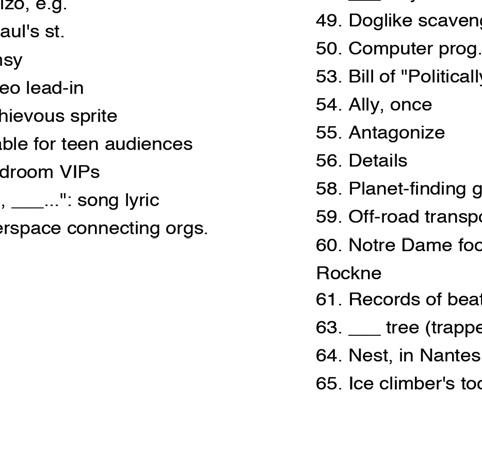
Every 3x3 square must contain the numbers from 1 through 9





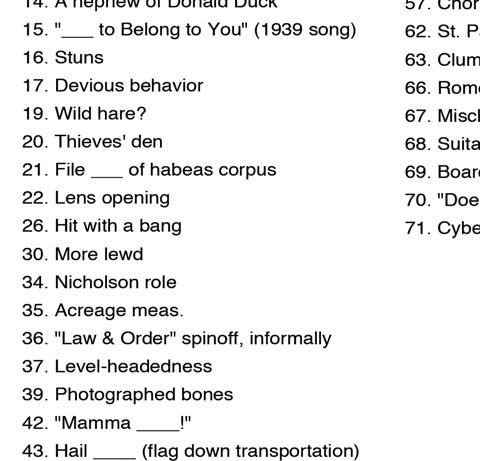

There’s a sense of excitement in the air, Aries. The Sun/Uranus link could coincide with an offer or opportunity that you truly hadn’t expected, but that might make a positive difference to your life. You’ll need to snap it up fast, otherwise it will be gone before you know it. Plus, the Moon in your home zone and its link to Jupiter, can inspire you to create a truly indulgent feast.
Keen to do something constructive, that might make a difference to the coming year? If this is the case, the Sun’s alignment with maverick Uranus in your sign, suggests honing your skills or learning newer and more relevant ones. It will help you to excel at your speciality, and stand out from the crowd. You’re in the mood to take on a challenge, and you may do so on impulse.
It can be so deeply interesting to browse the Internet, or watch programs that reveal slices of life you never knew about. Venus’s lingering tie to and Jupiter, may find you so fascinated by something or someone you’ll be eager to know more. If you’re genuinely excited about the possibilities ahead, don’t ignore this. Ready to let go of something? It will be a big relief.
Someone’s perspective could be like a wake-up call, inspiring you to change things that seem less than satisfactory. The more you spend time with them, the more you’ll be ready to take the plunge and make decisions you’ve been putting off for some while. A key aspect encourages you to disregard any fears, and take consistent steps to create the future and the life that you want.
An unexpected offer may be perfect for you. If you’ve been looking for a way to make the most of your talents and showcase your unique skills, this might be it. Even so, with Mercury in its retro phase, make sure you cover all the bases. You don’t want to miss out. The Moon in sensitive Cancer could inspire a time of relaxation and a chance for a little self-care, Leo.
Have an exciting project on the go? The Sun’s tie with Uranus suggests it may be wise to avoid overcomplicating it, and opt for a simple and innovative approach instead. The more you’re willing to think out of the box, the better it could turn out. There’s also potential for an encounter that might open your eyes to something you didn’t know. You’ll be so glad you found out, Virgo.
A cash surprise could show up just when you need it most. If you wanted a sum of money to pay a bill, purchase a gift for someone or even to treat yourself, it might be very handy. It’s also possible you’ll come up with a brilliant idea for a home business or the solution to an issue. A flash of inspiration may show up, and supply the enthusiasm to do whatever is necessary, Libra.
A conversation could be very enlightening, and might leave you wondering why you’ve been so worried about something when there’s no need to be. This person’s outlook may help you more than you know, if it allows you to relax and not be bothered. As a sign, you can focus intensely and ponder ideas and outcomes that never materialize. This might be a call to relax more, Scorpio.
Conversations may help confirm new and exciting plans, as this can be a great day for brainstorming, Archer. You might be amazed as original answers, solutions and brilliant ideas show up. There is also the chance of an encounter or perhaps a date, that you’ll really enjoy. Ready to snap up promising opportunities? Stay alert, as they could show up out of the blue.
The solution to a personal issue may be simpler than you think. You might be making it more complex because you can’t see an easy way out, Capricorn. Asking someone who is not involved might be a revelation, as a fresh perspective could resolve it. You may still have to put in the effort, but knowing you’re on track can bring peace of mind. You’ll be so pleased you’ve sorted it.
Something that’s been kept quiet could come out into the open, and knowing about it may be a relief. It might be a family secret or something that’s been a mystery to you that you’ve struggled to understand. The positive line-up between the Sun and Uranus in private zones, suggests that if you’ve felt at all guilty in this regard, you can stop now and move forward with a lighter step.
The coming days look to be busy but promising in so many ways, especially as the Sun makes a dazzling aspect to trendsetter Uranus. Opportunities can show up as you mingle and enjoy key events. Plus, you could be attracted to someone who has unique qualities, almost instantly. Keen to be friends? Nurture this bond Pisces, and it could entertain and surprise you for some time.

































